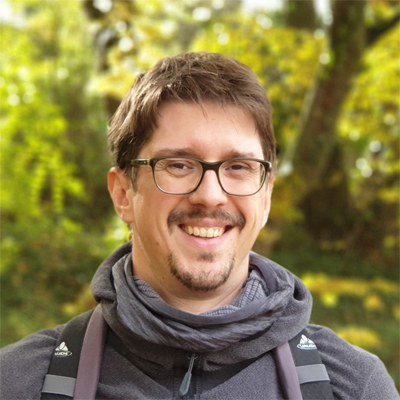Archaeology and Climate Change
Climate change is real. I can’t understand people that do not see that, but we’ll leave them aside for now. This blog is (partly) about Archaeology and here is my take: By examining how ancient civilizations navigated shifting environmental conditions, we glean insights that can illuminate a sustainable path forward. The question is how?
Archaeological Lessons in Resilience
Archaeological sites are records of adaptation, not just reminders of the past. The ingenuity of the farming practices used by the Ancestral Puebloans and the sophisticated water management systems developed by the ancient Maya civilisation both demonstrate the capacity of human creativity to adapt to ecological change. Such instances highlight the significance of resilience in coping with the unpredictability of the modern climate.
Mesopotamian offers a vivid historical example of climate’s profound impact. This region experienced drastic shifts in climate that directly influenced its society. The 3rd dynasty of Ur for example had massive problems due to salinization at end of the 3rd millennium BCE . The scarcity of resources exacerbated social tensions and contributed to adaptations in politics and the economy. This echoes the contemporary lesson that neglecting environmental constraints can have dire consequences.
Archaeology and Climate Change
I do not think Archaeology will solve the climate crisis, but we can learn from the past. For example can we learn from past societies that had to deal with heat already. Mudbrick houses developed over thousands of years and with good reason. Maybe it is time for a revival of that material? Urban planners may want to look at old city plans that have already been altered to shifting climate. Politicians should think about learning a lesson or two, because being unprepared has already brought civilizations down.
Lessons from ancient societies’ innovative resilience, combined with cautionary tales like Mesopotamia’s, highlight the importance of sustainable practices. As we consider the uncertain future of the climate, the echoes of antiquity remind us that the decisions we make today impact not just our own era. I am guessing that readers of this blog are already aware of the connection of Archaeology and climate change and I do not have to convince you, but maybe you can convince somebody else you know. Archaeology is usually well received and we might use our knowledge of the past to paint a picture for the future, albeit not a good one.
Cited Literature
{3642216:P6GEPNC6}
chicago-author-date
default
asc
0
2430
%7B%22status%22%3A%22success%22%2C%22updateneeded%22%3Afalse%2C%22instance%22%3Afalse%2C%22meta%22%3A%7B%22request_last%22%3A800%2C%22request_next%22%3A50%2C%22used_cache%22%3Atrue%7D%2C%22data%22%3A%5B%7B%22key%22%3A%229K3U5DQE%22%2C%22library%22%3A%7B%22id%22%3A3642216%7D%2C%22meta%22%3A%7B%22creatorSummary%22%3A%22Wolf%22%2C%22parsedDate%22%3A%222010%22%2C%22numChildren%22%3A0%7D%2C%22bib%22%3A%22%3Cdiv%20class%3D%5C%22csl-bib-body%5C%22%20style%3D%5C%22line-height%3A%201.35%3B%20padding-left%3A%201em%3B%20text-indent%3A-1em%3B%5C%22%3E%5Cn%20%20%3Cdiv%20class%3D%5C%22csl-entry%5C%22%3EWolf%2C%20Eric%20R.%202010.%20%3Ci%3EEurope%20and%20the%20Prople%20Without%20History%3C%5C%2Fi%3E.%203rd%20ed.%20Berkeley%5C%2FLos%20Angeles%5C%2FLondon%3A%20University%20of%20California.%3C%5C%2Fdiv%3E%5Cn%3C%5C%2Fdiv%3E%22%2C%22data%22%3A%7B%22itemType%22%3A%22book%22%2C%22title%22%3A%22Europe%20and%20the%20Prople%20Without%20History%22%2C%22creators%22%3A%5B%7B%22creatorType%22%3A%22author%22%2C%22firstName%22%3A%22Eric%20R.%22%2C%22lastName%22%3A%22Wolf%22%7D%5D%2C%22abstractNote%22%3A%22%22%2C%22date%22%3A%222010%22%2C%22language%22%3A%22English%22%2C%22ISBN%22%3A%22978-0-520-26818-0%22%2C%22url%22%3A%22%22%2C%22collections%22%3A%5B%2297RT325P%22%2C%22KGMWG5UR%22%5D%2C%22dateModified%22%3A%222021-02-27T17%3A36%3A40Z%22%7D%7D%2C%7B%22key%22%3A%227JBBHHVC%22%2C%22library%22%3A%7B%22id%22%3A3642216%7D%2C%22meta%22%3A%7B%22creatorSummary%22%3A%22Adler%22%2C%22parsedDate%22%3A%221892%22%2C%22numChildren%22%3A0%7D%2C%22bib%22%3A%22%3Cdiv%20class%3D%5C%22csl-bib-body%5C%22%20style%3D%5C%22line-height%3A%201.35%3B%20padding-left%3A%201em%3B%20text-indent%3A-1em%3B%5C%22%3E%5Cn%20%20%3Cdiv%20class%3D%5C%22csl-entry%5C%22%3EAdler%2C%20Friedrich.%201892.%20%3Ci%3EDie%20Baudenkm%26%23xE4%3Bler%20von%20Olympia%3C%5C%2Fi%3E.%203%20vols.%20Berlin%3A%20A.%20Asher%20%26amp%3B%20Co.%3C%5C%2Fdiv%3E%5Cn%3C%5C%2Fdiv%3E%22%2C%22data%22%3A%7B%22itemType%22%3A%22book%22%2C%22title%22%3A%22Die%20Baudenkm%5Cu00e4ler%20von%20Olympia%22%2C%22creators%22%3A%5B%7B%22creatorType%22%3A%22author%22%2C%22firstName%22%3A%22Friedrich%22%2C%22lastName%22%3A%22Adler%22%7D%5D%2C%22abstractNote%22%3A%22%22%2C%22date%22%3A%221892-96%22%2C%22language%22%3A%22German%22%2C%22ISBN%22%3A%22%22%2C%22url%22%3A%22%22%2C%22collections%22%3A%5B%22ZEUYZBWA%22%5D%2C%22dateModified%22%3A%222021-02-25T13%3A38%3A41Z%22%7D%7D%2C%7B%22key%22%3A%22BJAT3FM4%22%2C%22library%22%3A%7B%22id%22%3A3642216%7D%2C%22meta%22%3A%7B%22creatorSummary%22%3A%22Russell%22%2C%22parsedDate%22%3A%221995%22%2C%22numChildren%22%3A1%7D%2C%22bib%22%3A%22%3Cdiv%20class%3D%5C%22csl-bib-body%5C%22%20style%3D%5C%22line-height%3A%201.35%3B%20padding-left%3A%201em%3B%20text-indent%3A-1em%3B%5C%22%3E%5Cn%20%20%3Cdiv%20class%3D%5C%22csl-entry%5C%22%3ERussell%2C%20John%20Malcolm.%201995.%20%26%23x201C%3BLayard%26%23x2019%3Bs%20Descriptions%20of%20Rooms%20in%20the%20Southwest%20Palace%20at%20Nineveh.%26%23x201D%3B%20%3Ci%3EIraq%3C%5C%2Fi%3E%2057%3A%2071%26%23x2013%3B85.%3C%5C%2Fdiv%3E%5Cn%3C%5C%2Fdiv%3E%22%2C%22data%22%3A%7B%22itemType%22%3A%22journalArticle%22%2C%22title%22%3A%22Layard%27s%20Descriptions%20of%20Rooms%20in%20the%20Southwest%20Palace%20at%20Nineveh%22%2C%22creators%22%3A%5B%7B%22creatorType%22%3A%22author%22%2C%22firstName%22%3A%22John%20Malcolm%22%2C%22lastName%22%3A%22Russell%22%7D%5D%2C%22abstractNote%22%3A%22%22%2C%22date%22%3A%221995%22%2C%22language%22%3A%22English%22%2C%22DOI%22%3A%22%22%2C%22ISSN%22%3A%22%22%2C%22url%22%3A%22%22%2C%22collections%22%3A%5B%22KGMWG5UR%22%5D%2C%22dateModified%22%3A%222021-02-25T10%3A45%3A52Z%22%7D%7D%2C%7B%22key%22%3A%22CN78DX7M%22%2C%22library%22%3A%7B%22id%22%3A3642216%7D%2C%22meta%22%3A%7B%22creatorSummary%22%3A%22Cr%5Cu00fcsemann%22%2C%22parsedDate%22%3A%222001%22%2C%22numChildren%22%3A1%7D%2C%22bib%22%3A%22%3Cdiv%20class%3D%5C%22csl-bib-body%5C%22%20style%3D%5C%22line-height%3A%201.35%3B%20padding-left%3A%201em%3B%20text-indent%3A-1em%3B%5C%22%3E%5Cn%20%20%3Cdiv%20class%3D%5C%22csl-entry%5C%22%3ECr%26%23xFC%3Bsemann%2C%20Nicola.%202001.%20%3Ci%3EVom%20Zweistromland%20zum%20Kupfergraben.%20Vorgeschichte%20und%20Entstehungsjahre%20%281899-1918%29%20der%20Vorderasiatischen%20Abteilung%20der%20Berliner%20Museen%20vor%20fach-%20und%20kulturpolitischen%20Hintergr%26%23xFC%3Bnden%3C%5C%2Fi%3E.%20Vol.%2042%2C%20Beiheft.%20Jahrbuch%20der%20Berliner%20Museen.%20Berlin%3A%20Gebr.%20Mann%20Verlag.%20%3Ca%20href%3D%27http%3A%5C%2F%5C%2Fwww.jstor.org%5C%2Fstable%5C%2F4126049%27%3Ehttp%3A%5C%2F%5C%2Fwww.jstor.org%5C%2Fstable%5C%2F4126049%3C%5C%2Fa%3E.%3C%5C%2Fdiv%3E%5Cn%3C%5C%2Fdiv%3E%22%2C%22data%22%3A%7B%22itemType%22%3A%22book%22%2C%22title%22%3A%22Vom%20Zweistromland%20zum%20Kupfergraben.%20Vorgeschichte%20und%20Entstehungsjahre%20%281899-1918%29%20der%20Vorderasiatischen%20Abteilung%20der%20Berliner%20Museen%20vor%20fach-%20und%20kulturpolitischen%20Hintergr%5Cu00fcnden%22%2C%22creators%22%3A%5B%7B%22creatorType%22%3A%22author%22%2C%22firstName%22%3A%22Nicola%22%2C%22lastName%22%3A%22Cr%5Cu00fcsemann%22%7D%5D%2C%22abstractNote%22%3A%22%22%2C%22date%22%3A%222001%22%2C%22language%22%3A%22German%22%2C%22ISBN%22%3A%223-7861-2403-5%22%2C%22url%22%3A%22http%3A%5C%2F%5C%2Fwww.jstor.org%5C%2Fstable%5C%2F4126049%22%2C%22collections%22%3A%5B%22ZEUYZBWA%22%2C%22KGMWG5UR%22%5D%2C%22dateModified%22%3A%222021-02-25T09%3A37%3A30Z%22%7D%7D%2C%7B%22key%22%3A%225DFP3WNF%22%2C%22library%22%3A%7B%22id%22%3A3642216%7D%2C%22meta%22%3A%7B%22creatorSummary%22%3A%22Martin%22%2C%22parsedDate%22%3A%221988%22%2C%22numChildren%22%3A1%7D%2C%22bib%22%3A%22%3Cdiv%20class%3D%5C%22csl-bib-body%5C%22%20style%3D%5C%22line-height%3A%201.35%3B%20padding-left%3A%201em%3B%20text-indent%3A-1em%3B%5C%22%3E%5Cn%20%20%3Cdiv%20class%3D%5C%22csl-entry%5C%22%3EMartin%2C%20Harriet%20P.%201988.%20%3Ci%3EFara%3A%20A%20Reconstruction%20of%20the%20Ancient%20Mesopotamian%20City%20of%20Shuruppak%3C%5C%2Fi%3E.%20Birmingham%3A%20Chris%20Martin.%3C%5C%2Fdiv%3E%5Cn%3C%5C%2Fdiv%3E%22%2C%22data%22%3A%7B%22itemType%22%3A%22book%22%2C%22title%22%3A%22Fara%3A%20A%20Reconstruction%20of%20the%20Ancient%20Mesopotamian%20City%20of%20Shuruppak%22%2C%22creators%22%3A%5B%7B%22creatorType%22%3A%22author%22%2C%22firstName%22%3A%22Harriet%20P.%22%2C%22lastName%22%3A%22Martin%22%7D%5D%2C%22abstractNote%22%3A%22%22%2C%22date%22%3A%221988%22%2C%22language%22%3A%22English%22%2C%22ISBN%22%3A%220-907695-02-7%22%2C%22url%22%3A%22%22%2C%22collections%22%3A%5B%22RFH6SEDM%22%5D%2C%22dateModified%22%3A%222021-02-23T15%3A31%3A41Z%22%7D%7D%2C%7B%22key%22%3A%22PPELARPN%22%2C%22library%22%3A%7B%22id%22%3A3642216%7D%2C%22meta%22%3A%7B%22creatorSummary%22%3A%22Britannica%22%2C%22parsedDate%22%3A%222020-11-10%22%2C%22numChildren%22%3A0%7D%2C%22bib%22%3A%22%3Cdiv%20class%3D%5C%22csl-bib-body%5C%22%20style%3D%5C%22line-height%3A%201.35%3B%20padding-left%3A%201em%3B%20text-indent%3A-1em%3B%5C%22%3E%5Cn%20%20%3Cdiv%20class%3D%5C%22csl-entry%5C%22%3EBritannica%2C%20T.%20Editors%20of%20Encyclopaedia.%202020.%20%26%23x201C%3BThomas%20Bruce%2C%207th%20Earl%20of%20Elgin.%26%23x201D%3B%20In%20%3Ci%3EEncyclopedia%20Britannica%3C%5C%2Fi%3E.%20%3Ca%20href%3D%27https%3A%5C%2F%5C%2Fwww.britannica.com%5C%2Fbiography%5C%2FThomas-Bruce-7th-earl-of-Elgin%27%3Ehttps%3A%5C%2F%5C%2Fwww.britannica.com%5C%2Fbiography%5C%2FThomas-Bruce-7th-earl-of-Elgin%3C%5C%2Fa%3E.%3C%5C%2Fdiv%3E%5Cn%3C%5C%2Fdiv%3E%22%2C%22data%22%3A%7B%22itemType%22%3A%22encyclopediaArticle%22%2C%22title%22%3A%22Thomas%20Bruce%2C%207th%20earl%20of%20Elgin%22%2C%22creators%22%3A%5B%7B%22creatorType%22%3A%22author%22%2C%22firstName%22%3A%22T.%20Editors%20of%20Encyclopaedia%22%2C%22lastName%22%3A%22Britannica%22%7D%5D%2C%22abstractNote%22%3A%22%22%2C%22encyclopediaTitle%22%3A%22Encyclopedia%20Britannica%22%2C%22date%22%3A%22November%2010%2C%202020%22%2C%22ISBN%22%3A%22%22%2C%22url%22%3A%22https%3A%5C%2F%5C%2Fwww.britannica.com%5C%2Fbiography%5C%2FThomas-Bruce-7th-earl-of-Elgin%22%2C%22language%22%3A%22%22%2C%22collections%22%3A%5B%22ZEUYZBWA%22%5D%2C%22dateModified%22%3A%222021-02-23T09%3A14%3A43Z%22%7D%7D%2C%7B%22key%22%3A%22UXPKYNFA%22%2C%22library%22%3A%7B%22id%22%3A3642216%7D%2C%22meta%22%3A%7B%22creatorSummary%22%3A%22Meisel%22%2C%22parsedDate%22%3A%221988%22%2C%22numChildren%22%3A1%7D%2C%22bib%22%3A%22%3Cdiv%20class%3D%5C%22csl-bib-body%5C%22%20style%3D%5C%22line-height%3A%201.35%3B%20padding-left%3A%201em%3B%20text-indent%3A-1em%3B%5C%22%3E%5Cn%20%20%3Cdiv%20class%3D%5C%22csl-entry%5C%22%3EMeisel%2C%20Martin.%201988.%20%26%23x201C%3BPictorial%20Engagements%3A%20Byron%2C%20Delacroix%2C%20Ford%20Madox%20Brown.%26%23x201D%3B%20%3Ci%3EStudies%20in%20Romanticism%3C%5C%2Fi%3E%2027%20%284%29%3A%20579%26%23x2013%3B603.%20%3Ca%20href%3D%27https%3A%5C%2F%5C%2Fdoi.org%5C%2Fhttps%3A%5C%2F%5C%2Fdoi.org%5C%2F10.2307%5C%2F25600747%27%3Ehttps%3A%5C%2F%5C%2Fdoi.org%5C%2Fhttps%3A%5C%2F%5C%2Fdoi.org%5C%2F10.2307%5C%2F25600747%3C%5C%2Fa%3E.%3C%5C%2Fdiv%3E%5Cn%3C%5C%2Fdiv%3E%22%2C%22data%22%3A%7B%22itemType%22%3A%22journalArticle%22%2C%22title%22%3A%22Pictorial%20Engagements%3A%20Byron%2C%20Delacroix%2C%20Ford%20Madox%20Brown%22%2C%22creators%22%3A%5B%7B%22creatorType%22%3A%22author%22%2C%22firstName%22%3A%22Martin%22%2C%22lastName%22%3A%22Meisel%22%7D%5D%2C%22abstractNote%22%3A%22%22%2C%22date%22%3A%221988%22%2C%22language%22%3A%22English%22%2C%22DOI%22%3A%22https%3A%5C%2F%5C%2Fdoi.org%5C%2F10.2307%5C%2F25600747%22%2C%22ISSN%22%3A%220039-3762%22%2C%22url%22%3A%22https%3A%5C%2F%5C%2Fwww.jstor.org%5C%2Fstable%5C%2F25600747%3Fseq%3D1%23metadata_info_tab_contents%22%2C%22collections%22%3A%5B%22ZEUYZBWA%22%5D%2C%22dateModified%22%3A%222021-02-22T10%3A25%3A19Z%22%7D%7D%2C%7B%22key%22%3A%222MKQNDJ2%22%2C%22library%22%3A%7B%22id%22%3A3642216%7D%2C%22meta%22%3A%7B%22creatorSummary%22%3A%22Loos%22%2C%22parsedDate%22%3A%221924%22%2C%22numChildren%22%3A0%7D%2C%22bib%22%3A%22%3Cdiv%20class%3D%5C%22csl-bib-body%5C%22%20style%3D%5C%22line-height%3A%201.35%3B%20padding-left%3A%201em%3B%20text-indent%3A-1em%3B%5C%22%3E%5Cn%20%20%3Cdiv%20class%3D%5C%22csl-entry%5C%22%3ELoos%2C%20Adolf.%201924.%20%26%23x201C%3BDas%20Grand-Hotel%20Babylon.%26%23x201D%3B%20%3Ci%3EDas%20Kunstblatt%3C%5C%2Fi%3E%201924%20%284%29%3A%2096%26%23x2013%3B100.%20%3Ca%20href%3D%27https%3A%5C%2F%5C%2Fmagazines.iaddb.org%5C%2Fissue%5C%2FDKB%5C%2F1924-04-01%5C%2Fedition%5C%2F8-4%5C%2Fpage%5C%2F1%3Fquery%3D%27%3Ehttps%3A%5C%2F%5C%2Fmagazines.iaddb.org%5C%2Fissue%5C%2FDKB%5C%2F1924-04-01%5C%2Fedition%5C%2F8-4%5C%2Fpage%5C%2F1%3Fquery%3D%3C%5C%2Fa%3E.%3C%5C%2Fdiv%3E%5Cn%3C%5C%2Fdiv%3E%22%2C%22data%22%3A%7B%22itemType%22%3A%22journalArticle%22%2C%22title%22%3A%22Das%20Grand-Hotel%20Babylon%22%2C%22creators%22%3A%5B%7B%22creatorType%22%3A%22author%22%2C%22firstName%22%3A%22Adolf%22%2C%22lastName%22%3A%22Loos%22%7D%5D%2C%22abstractNote%22%3A%22%22%2C%22date%22%3A%221924%22%2C%22language%22%3A%22German%22%2C%22DOI%22%3A%22%22%2C%22ISSN%22%3A%22%22%2C%22url%22%3A%22https%3A%5C%2F%5C%2Fmagazines.iaddb.org%5C%2Fissue%5C%2FDKB%5C%2F1924-04-01%5C%2Fedition%5C%2F8-4%5C%2Fpage%5C%2F1%3Fquery%3D%22%2C%22collections%22%3A%5B%22ZEUYZBWA%22%5D%2C%22dateModified%22%3A%222021-02-20T09%3A49%3A38Z%22%7D%7D%2C%7B%22key%22%3A%22836D98L2%22%2C%22library%22%3A%7B%22id%22%3A3642216%7D%2C%22meta%22%3A%7B%22creatorSummary%22%3A%22Andr%5Cu00e9-Salvini%22%2C%22parsedDate%22%3A%222019%22%2C%22numChildren%22%3A0%7D%2C%22bib%22%3A%22%3Cdiv%20class%3D%5C%22csl-bib-body%5C%22%20style%3D%5C%22line-height%3A%201.35%3B%20padding-left%3A%201em%3B%20text-indent%3A-1em%3B%5C%22%3E%5Cn%20%20%3Cdiv%20class%3D%5C%22csl-entry%5C%22%3EAndr%26%23xE9%3B-Salvini%2C%20B%26%23xE9%3Batrice.%202019.%20%26%23x201C%3BPlace.%26%23x201D%3B%20In%20%3Ci%3EReallexikon%20der%20Assyriologie%20und%20vorderasiatischen%20Arch%26%23xE4%3Bologie%3C%5C%2Fi%3E%2C%20edited%20by%20Erich%20Ebeling%20and%20Ernst%20F.%20Weidner%2C%2010%3A588%26%23x2013%3B89.%20M%26%23xFC%3Bnchen.%20%3Ca%20href%3D%27http%3A%5C%2F%5C%2Fpublikationen.badw.de%5C%2Fde%5C%2Frla%27%3Ehttp%3A%5C%2F%5C%2Fpublikationen.badw.de%5C%2Fde%5C%2Frla%3C%5C%2Fa%3E.%3C%5C%2Fdiv%3E%5Cn%3C%5C%2Fdiv%3E%22%2C%22data%22%3A%7B%22itemType%22%3A%22bookSection%22%2C%22title%22%3A%22Place%22%2C%22creators%22%3A%5B%7B%22creatorType%22%3A%22author%22%2C%22firstName%22%3A%22B%5Cu00e9atrice%22%2C%22lastName%22%3A%22Andr%5Cu00e9-Salvini%22%7D%2C%7B%22creatorType%22%3A%22editor%22%2C%22firstName%22%3A%22Erich%22%2C%22lastName%22%3A%22Ebeling%22%7D%2C%7B%22creatorType%22%3A%22editor%22%2C%22firstName%22%3A%22Ernst%20F.%22%2C%22lastName%22%3A%22Weidner%22%7D%5D%2C%22abstractNote%22%3A%22%22%2C%22bookTitle%22%3A%22Reallexikon%20der%20Assyriologie%20und%20vorderasiatischen%20Arch%5Cu00e4ologie%22%2C%22date%22%3A%222019%22%2C%22language%22%3A%22French%22%2C%22ISBN%22%3A%22%22%2C%22url%22%3A%22http%3A%5C%2F%5C%2Fpublikationen.badw.de%5C%2Fde%5C%2Frla%22%2C%22collections%22%3A%5B%22ZEUYZBWA%22%5D%2C%22dateModified%22%3A%222021-02-19T10%3A05%3A19Z%22%7D%7D%2C%7B%22key%22%3A%227RCWRKSN%22%2C%22library%22%3A%7B%22id%22%3A3642216%7D%2C%22meta%22%3A%7B%22creatorSummary%22%3A%22Castendyk%20et%20al.%22%2C%22parsedDate%22%3A%222021%22%2C%22numChildren%22%3A1%7D%2C%22bib%22%3A%22%3Cdiv%20class%3D%5C%22csl-bib-body%5C%22%20style%3D%5C%22line-height%3A%201.35%3B%20padding-left%3A%201em%3B%20text-indent%3A-1em%3B%5C%22%3E%5Cn%20%20%3Cdiv%20class%3D%5C%22csl-entry%5C%22%3ECastendyk%2C%20Oliver%2C%20Juliane%20M%26%23xFC%3Bller%2C%20Manuel%20Schwarz%2C%20Lisa-Charlotte%20Wolter%2C%20and%20Elisa%20Dorothee%20Adam.%202021.%20%3Ci%3EDie%20Games-Branche%20in%20Deutschland%202018%5C%2F19%5C%2F20%3C%5C%2Fi%3E.%20Hamburg%3A%20Hamburg%20Media%20School.%20%3Ca%20href%3D%27file%3A%5C%2F%5C%2F%5C%2FC%3A%5C%2FUsers%5C%2FSebastian%5C%2FDownloads%5C%2FGames-Studie_2018-20_HMS_2021-01-26_V3%2520%281%29.pdf%27%3Efile%3A%5C%2F%5C%2F%5C%2FC%3A%5C%2FUsers%5C%2FSebastian%5C%2FDownloads%5C%2FGames-Studie_2018-20_HMS_2021-01-26_V3%2520%281%29.pdf%3C%5C%2Fa%3E.%3C%5C%2Fdiv%3E%5Cn%3C%5C%2Fdiv%3E%22%2C%22data%22%3A%7B%22itemType%22%3A%22book%22%2C%22title%22%3A%22Die%20Games-Branche%20in%20Deutschland%202018%5C%2F19%5C%2F20%22%2C%22creators%22%3A%5B%7B%22creatorType%22%3A%22author%22%2C%22firstName%22%3A%22Oliver%22%2C%22lastName%22%3A%22Castendyk%22%7D%2C%7B%22creatorType%22%3A%22author%22%2C%22firstName%22%3A%22Juliane%22%2C%22lastName%22%3A%22M%5Cu00fcller%22%7D%2C%7B%22creatorType%22%3A%22author%22%2C%22firstName%22%3A%22Manuel%22%2C%22lastName%22%3A%22Schwarz%22%7D%2C%7B%22creatorType%22%3A%22author%22%2C%22firstName%22%3A%22Lisa-Charlotte%22%2C%22lastName%22%3A%22Wolter%22%7D%2C%7B%22creatorType%22%3A%22author%22%2C%22firstName%22%3A%22Elisa%20Dorothee%22%2C%22lastName%22%3A%22Adam%22%7D%5D%2C%22abstractNote%22%3A%22%22%2C%22date%22%3A%222021%22%2C%22language%22%3A%22German%22%2C%22ISBN%22%3A%22%22%2C%22url%22%3A%22file%3A%5C%2F%5C%2F%5C%2FC%3A%5C%2FUsers%5C%2FSebastian%5C%2FDownloads%5C%2FGames-Studie_2018-20_HMS_2021-01-26_V3%2520%281%29.pdf%22%2C%22collections%22%3A%5B%22ZEUYZBWA%22%5D%2C%22dateModified%22%3A%222021-02-15T12%3A04%3A53Z%22%7D%7D%2C%7B%22key%22%3A%22IWIR9R3V%22%2C%22library%22%3A%7B%22id%22%3A3642216%7D%2C%22meta%22%3A%7B%22creatorSummary%22%3A%22Said%22%2C%22parsedDate%22%3A%221978%22%2C%22numChildren%22%3A0%7D%2C%22bib%22%3A%22%3Cdiv%20class%3D%5C%22csl-bib-body%5C%22%20style%3D%5C%22line-height%3A%201.35%3B%20padding-left%3A%201em%3B%20text-indent%3A-1em%3B%5C%22%3E%5Cn%20%20%3Cdiv%20class%3D%5C%22csl-entry%5C%22%3ESaid%2C%20Edward%20W.%201978.%20%3Ci%3EOrientalism%3C%5C%2Fi%3E.%20ohne%20Ort%3A%20Pantheon.%3C%5C%2Fdiv%3E%5Cn%3C%5C%2Fdiv%3E%22%2C%22data%22%3A%7B%22itemType%22%3A%22book%22%2C%22title%22%3A%22Orientalism%22%2C%22creators%22%3A%5B%7B%22creatorType%22%3A%22author%22%2C%22firstName%22%3A%22Edward%20W.%22%2C%22lastName%22%3A%22Said%22%7D%5D%2C%22abstractNote%22%3A%22%22%2C%22date%22%3A%221978%22%2C%22language%22%3A%22English%22%2C%22ISBN%22%3A%22978-0-394-42814-7%22%2C%22url%22%3A%22%22%2C%22collections%22%3A%5B%22ZEUYZBWA%22%5D%2C%22dateModified%22%3A%222021-02-15T11%3A51%3A26Z%22%7D%7D%2C%7B%22key%22%3A%22U9ZS887A%22%2C%22library%22%3A%7B%22id%22%3A3642216%7D%2C%22meta%22%3A%7B%22creatorSummary%22%3A%22Cannon%22%2C%22parsedDate%22%3A%222004%22%2C%22numChildren%22%3A0%7D%2C%22bib%22%3A%22%3Cdiv%20class%3D%5C%22csl-bib-body%5C%22%20style%3D%5C%22line-height%3A%201.35%3B%20padding-left%3A%201em%3B%20text-indent%3A-1em%3B%5C%22%3E%5Cn%20%20%3Cdiv%20class%3D%5C%22csl-entry%5C%22%3ECannon%2C%20Deborah.%202004.%20%3Ci%3EThe%20Raven%26%23x2019%3Bs%20Pool%3C%5C%2Fi%3E.%20Victoria%3A%20Trafford.%3C%5C%2Fdiv%3E%5Cn%3C%5C%2Fdiv%3E%22%2C%22data%22%3A%7B%22itemType%22%3A%22book%22%2C%22title%22%3A%22The%20Raven%27s%20Pool%22%2C%22creators%22%3A%5B%7B%22creatorType%22%3A%22author%22%2C%22firstName%22%3A%22Deborah%22%2C%22lastName%22%3A%22Cannon%22%7D%5D%2C%22abstractNote%22%3A%22%22%2C%22date%22%3A%222004%22%2C%22language%22%3A%22English%22%2C%22ISBN%22%3A%22978-1-4120-3504-0%22%2C%22url%22%3A%22%22%2C%22collections%22%3A%5B%22ZEUYZBWA%22%5D%2C%22dateModified%22%3A%222021-02-06T11%3A11%3A35Z%22%7D%7D%2C%7B%22key%22%3A%22RNKUR8SA%22%2C%22library%22%3A%7B%22id%22%3A3642216%7D%2C%22meta%22%3A%7B%22creatorSummary%22%3A%22Weststar%20et%20al.%22%2C%22parsedDate%22%3A%222019%22%2C%22numChildren%22%3A1%7D%2C%22bib%22%3A%22%3Cdiv%20class%3D%5C%22csl-bib-body%5C%22%20style%3D%5C%22line-height%3A%201.35%3B%20padding-left%3A%201em%3B%20text-indent%3A-1em%3B%5C%22%3E%5Cn%20%20%3Cdiv%20class%3D%5C%22csl-entry%5C%22%3EWeststar%2C%20Johanna%2C%20Eva%20Kwan%2C%20and%20Shruti%20Kumar.%202019.%20%3Ci%3EIdga%20Developer%20Satisfaction%20Survey%202019%20Summary%20Report%3C%5C%2Fi%3E.%20igda.%20%3Ca%20href%3D%27https%3A%5C%2F%5C%2Fs3-us-east-2.amazonaws.com%5C%2Figda-website%5C%2Fwp-content%5C%2Fuploads%5C%2F2020%5C%2F01%5C%2F29093706%5C%2FIGDA-DSS-2019_Summary-Report_Nov-20-2019.pdf%27%3Ehttps%3A%5C%2F%5C%2Fs3-us-east-2.amazonaws.com%5C%2Figda-website%5C%2Fwp-content%5C%2Fuploads%5C%2F2020%5C%2F01%5C%2F29093706%5C%2FIGDA-DSS-2019_Summary-Report_Nov-20-2019.pdf%3C%5C%2Fa%3E.%3C%5C%2Fdiv%3E%5Cn%3C%5C%2Fdiv%3E%22%2C%22data%22%3A%7B%22itemType%22%3A%22book%22%2C%22title%22%3A%22idga%20Developer%20Satisfaction%20Survey%202019%20Summary%20Report%22%2C%22creators%22%3A%5B%7B%22creatorType%22%3A%22author%22%2C%22firstName%22%3A%22Johanna%22%2C%22lastName%22%3A%22Weststar%22%7D%2C%7B%22creatorType%22%3A%22author%22%2C%22firstName%22%3A%22Eva%22%2C%22lastName%22%3A%22Kwan%22%7D%2C%7B%22creatorType%22%3A%22author%22%2C%22firstName%22%3A%22Shruti%22%2C%22lastName%22%3A%22Kumar%22%7D%5D%2C%22abstractNote%22%3A%22%22%2C%22date%22%3A%222019%22%2C%22language%22%3A%22English%22%2C%22ISBN%22%3A%22%22%2C%22url%22%3A%22https%3A%5C%2F%5C%2Fs3-us-east-2.amazonaws.com%5C%2Figda-website%5C%2Fwp-content%5C%2Fuploads%5C%2F2020%5C%2F01%5C%2F29093706%5C%2FIGDA-DSS-2019_Summary-Report_Nov-20-2019.pdf%22%2C%22collections%22%3A%5B%22ZEUYZBWA%22%5D%2C%22dateModified%22%3A%222021-02-06T10%3A16%3A07Z%22%7D%7D%2C%7B%22key%22%3A%22XG7R9SSZ%22%2C%22library%22%3A%7B%22id%22%3A3642216%7D%2C%22meta%22%3A%7B%22creatorSummary%22%3A%22Hitchens%22%2C%22parsedDate%22%3A%222011%22%2C%22numChildren%22%3A0%7D%2C%22bib%22%3A%22%3Cdiv%20class%3D%5C%22csl-bib-body%5C%22%20style%3D%5C%22line-height%3A%201.35%3B%20padding-left%3A%201em%3B%20text-indent%3A-1em%3B%5C%22%3E%5Cn%20%20%3Cdiv%20class%3D%5C%22csl-entry%5C%22%3EHitchens%2C%20Michael.%202011.%20%26%23x201C%3BA%20Survey%20of%20First-Person%20Shooters%20and%20Their%20Avatars.%26%23x201D%3B%20%3Ci%3EGame%20Studies%3C%5C%2Fi%3E%2011%20%283%29.%20%3Ca%20href%3D%27http%3A%5C%2F%5C%2Fgamestudies.org%5C%2F1103%5C%2Farticles%5C%2Fmichael_hitchens%27%3Ehttp%3A%5C%2F%5C%2Fgamestudies.org%5C%2F1103%5C%2Farticles%5C%2Fmichael_hitchens%3C%5C%2Fa%3E.%3C%5C%2Fdiv%3E%5Cn%3C%5C%2Fdiv%3E%22%2C%22data%22%3A%7B%22itemType%22%3A%22journalArticle%22%2C%22title%22%3A%22A%20Survey%20of%20First-person%20Shooters%20and%20their%20Avatars%22%2C%22creators%22%3A%5B%7B%22creatorType%22%3A%22author%22%2C%22firstName%22%3A%22Michael%22%2C%22lastName%22%3A%22Hitchens%22%7D%5D%2C%22abstractNote%22%3A%22%22%2C%22date%22%3A%22Dez%202011%22%2C%22language%22%3A%22English%22%2C%22DOI%22%3A%22%22%2C%22ISSN%22%3A%221604-7982%22%2C%22url%22%3A%22http%3A%5C%2F%5C%2Fgamestudies.org%5C%2F1103%5C%2Farticles%5C%2Fmichael_hitchens%22%2C%22collections%22%3A%5B%222B5PWSD4%22%2C%22ZEUYZBWA%22%5D%2C%22dateModified%22%3A%222021-02-06T09%3A47%3A59Z%22%7D%7D%2C%7B%22key%22%3A%22GYGXIVQR%22%2C%22library%22%3A%7B%22id%22%3A3642216%7D%2C%22meta%22%3A%7B%22creatorSummary%22%3A%22Kiel%22%2C%22parsedDate%22%3A%222020%22%2C%22numChildren%22%3A0%7D%2C%22bib%22%3A%22%3Cdiv%20class%3D%5C%22csl-bib-body%5C%22%20style%3D%5C%22line-height%3A%201.35%3B%20padding-left%3A%201em%3B%20text-indent%3A-1em%3B%5C%22%3E%5Cn%20%20%3Cdiv%20class%3D%5C%22csl-entry%5C%22%3EKiel%2C%20Nina.%202020.%20%26%23x201C%3BDiversit%26%23xE4%3Bt.%26%23x201D%3B%20In%20%3Ci%3EHandbuch%20Gameskultur.%20%26%23xDC%3Bber%20die%20Kulturwelten%20von%20Games%3C%5C%2Fi%3E%2C%20edited%20by%20Olaf%20Zimmermann%20and%20Felix%20Falk%2C%20202%26%23x2013%3B8.%20Berlin%3A%20Deutscher%20Kulturrat.%3C%5C%2Fdiv%3E%5Cn%3C%5C%2Fdiv%3E%22%2C%22data%22%3A%7B%22itemType%22%3A%22bookSection%22%2C%22title%22%3A%22Diversit%5Cu00e4t%22%2C%22creators%22%3A%5B%7B%22creatorType%22%3A%22author%22%2C%22firstName%22%3A%22Nina%22%2C%22lastName%22%3A%22Kiel%22%7D%2C%7B%22creatorType%22%3A%22editor%22%2C%22firstName%22%3A%22Olaf%22%2C%22lastName%22%3A%22Zimmermann%22%7D%2C%7B%22creatorType%22%3A%22editor%22%2C%22firstName%22%3A%22Felix%22%2C%22lastName%22%3A%22Falk%22%7D%5D%2C%22abstractNote%22%3A%22%22%2C%22bookTitle%22%3A%22Handbuch%20Gameskultur.%20%5Cu00dcber%20die%20Kulturwelten%20von%20Games%22%2C%22date%22%3A%222020%22%2C%22language%22%3A%22German%22%2C%22ISBN%22%3A%22978-3-947308-22-4%22%2C%22url%22%3A%22%22%2C%22collections%22%3A%5B%22ZEUYZBWA%22%5D%2C%22dateModified%22%3A%222021-02-06T09%3A25%3A47Z%22%7D%7D%2C%7B%22key%22%3A%225XVJRNJ9%22%2C%22library%22%3A%7B%22id%22%3A3642216%7D%2C%22meta%22%3A%7B%22creatorSummary%22%3A%22Hughey%22%2C%22parsedDate%22%3A%222014%22%2C%22numChildren%22%3A0%7D%2C%22bib%22%3A%22%3Cdiv%20class%3D%5C%22csl-bib-body%5C%22%20style%3D%5C%22line-height%3A%201.35%3B%20padding-left%3A%201em%3B%20text-indent%3A-1em%3B%5C%22%3E%5Cn%20%20%3Cdiv%20class%3D%5C%22csl-entry%5C%22%3EHughey%2C%20Matthew%20W.%202014.%20%3Ci%3EThe%20White%20Savior%20Film%3A%20Content%2C%20Critics%2C%20and%20Consumption%3C%5C%2Fi%3E.%20Philadelphia%3A%20Temple%20University.%3C%5C%2Fdiv%3E%5Cn%3C%5C%2Fdiv%3E%22%2C%22data%22%3A%7B%22itemType%22%3A%22book%22%2C%22title%22%3A%22The%20White%20Savior%20Film%3A%20Content%2C%20Critics%2C%20and%20Consumption%22%2C%22creators%22%3A%5B%7B%22creatorType%22%3A%22author%22%2C%22firstName%22%3A%22Matthew%20W.%22%2C%22lastName%22%3A%22Hughey%22%7D%5D%2C%22abstractNote%22%3A%22%22%2C%22date%22%3A%222014%22%2C%22language%22%3A%22English%22%2C%22ISBN%22%3A%22978-1-4399-1001-6%22%2C%22url%22%3A%22%22%2C%22collections%22%3A%5B%22ZEUYZBWA%22%5D%2C%22dateModified%22%3A%222021-02-05T14%3A24%3A57Z%22%7D%7D%2C%7B%22key%22%3A%223E5PZJ4N%22%2C%22library%22%3A%7B%22id%22%3A3642216%7D%2C%22meta%22%3A%7B%22creatorSummary%22%3A%22Brown%22%2C%22parsedDate%22%3A%222004%22%2C%22numChildren%22%3A0%7D%2C%22bib%22%3A%22%3Cdiv%20class%3D%5C%22csl-bib-body%5C%22%20style%3D%5C%22line-height%3A%201.35%3B%20padding-left%3A%201em%3B%20text-indent%3A-1em%3B%5C%22%3E%5Cn%20%20%3Cdiv%20class%3D%5C%22csl-entry%5C%22%3EBrown%2C%20Dan.%202004.%20%3Ci%3ESakrileg%3C%5C%2Fi%3E.%202nd%20ed.%20Bergisch%20Gladbach%3A%20Bastei%20L%26%23xFC%3Bbbe.%3C%5C%2Fdiv%3E%5Cn%3C%5C%2Fdiv%3E%22%2C%22data%22%3A%7B%22itemType%22%3A%22book%22%2C%22title%22%3A%22Sakrileg%22%2C%22creators%22%3A%5B%7B%22creatorType%22%3A%22author%22%2C%22firstName%22%3A%22Dan%22%2C%22lastName%22%3A%22Brown%22%7D%5D%2C%22abstractNote%22%3A%22%22%2C%22date%22%3A%222004%22%2C%22language%22%3A%22German%22%2C%22ISBN%22%3A%22978-3-404-15485-2%22%2C%22url%22%3A%22%22%2C%22collections%22%3A%5B%22ZEUYZBWA%22%5D%2C%22dateModified%22%3A%222021-02-05T13%3A46%3A08Z%22%7D%7D%2C%7B%22key%22%3A%22F48Z2ZJC%22%2C%22library%22%3A%7B%22id%22%3A3642216%7D%2C%22meta%22%3A%7B%22creatorSummary%22%3A%22Newport%22%2C%22parsedDate%22%3A%222016%22%2C%22numChildren%22%3A0%7D%2C%22bib%22%3A%22%3Cdiv%20class%3D%5C%22csl-bib-body%5C%22%20style%3D%5C%22line-height%3A%201.35%3B%20padding-left%3A%201em%3B%20text-indent%3A-1em%3B%5C%22%3E%5Cn%20%20%3Cdiv%20class%3D%5C%22csl-entry%5C%22%3ENewport%2C%20Cal.%202016.%20%3Ci%3EDeep%20Work.%20Rules%20for%20Focused%20Success%20in%20a%20Distracted%20World%3C%5C%2Fi%3E.%20London%3A%20Piatkus.%3C%5C%2Fdiv%3E%5Cn%3C%5C%2Fdiv%3E%22%2C%22data%22%3A%7B%22itemType%22%3A%22book%22%2C%22title%22%3A%22Deep%20Work.%20Rules%20for%20focused%20success%20in%20a%20distracted%20world%22%2C%22creators%22%3A%5B%7B%22creatorType%22%3A%22author%22%2C%22firstName%22%3A%22Cal%22%2C%22lastName%22%3A%22Newport%22%7D%5D%2C%22abstractNote%22%3A%22%22%2C%22date%22%3A%222016%22%2C%22language%22%3A%22English%22%2C%22ISBN%22%3A%22978-0-349-41190-3%22%2C%22url%22%3A%22%22%2C%22collections%22%3A%5B%2297RT325P%22%2C%22SIXE438V%22%5D%2C%22dateModified%22%3A%222021-02-02T08%3A49%3A42Z%22%7D%7D%2C%7B%22key%22%3A%223KYSL22A%22%2C%22library%22%3A%7B%22id%22%3A3642216%7D%2C%22meta%22%3A%7B%22creatorSummary%22%3A%22Moshenska%22%2C%22parsedDate%22%3A%222017%22%2C%22numChildren%22%3A1%7D%2C%22bib%22%3A%22%3Cdiv%20class%3D%5C%22csl-bib-body%5C%22%20style%3D%5C%22line-height%3A%201.35%3B%20padding-left%3A%201em%3B%20text-indent%3A-1em%3B%5C%22%3E%5Cn%20%20%3Cdiv%20class%3D%5C%22csl-entry%5C%22%3EMoshenska%2C%20Gabriel%2C%20ed.%202017.%20%3Ci%3EKey%20Concepts%20in%20Public%20Archaeology%3C%5C%2Fi%3E.%20London%3A%20UCL%20Press.%3C%5C%2Fdiv%3E%5Cn%3C%5C%2Fdiv%3E%22%2C%22data%22%3A%7B%22itemType%22%3A%22book%22%2C%22title%22%3A%22Key%20Concepts%20in%20Public%20Archaeology%22%2C%22creators%22%3A%5B%7B%22creatorType%22%3A%22editor%22%2C%22firstName%22%3A%22Gabriel%22%2C%22lastName%22%3A%22Moshenska%22%7D%5D%2C%22abstractNote%22%3A%22%22%2C%22date%22%3A%222017%22%2C%22language%22%3A%22English%22%2C%22ISBN%22%3A%22978-1-911576-41-9%22%2C%22url%22%3A%22%22%2C%22collections%22%3A%5B%227SX5MH9U%22%5D%2C%22dateModified%22%3A%222021-02-01T10%3A19%3A51Z%22%7D%7D%2C%7B%22key%22%3A%22U6XXLRRT%22%2C%22library%22%3A%7B%22id%22%3A3642216%7D%2C%22meta%22%3A%7B%22creatorSummary%22%3A%22Clear%22%2C%22parsedDate%22%3A%222018%22%2C%22numChildren%22%3A0%7D%2C%22bib%22%3A%22%3Cdiv%20class%3D%5C%22csl-bib-body%5C%22%20style%3D%5C%22line-height%3A%201.35%3B%20padding-left%3A%201em%3B%20text-indent%3A-1em%3B%5C%22%3E%5Cn%20%20%3Cdiv%20class%3D%5C%22csl-entry%5C%22%3EClear%2C%20James.%202018.%20%3Ci%3EAtomic%20Habits.%20An%20Easy%20and%20Proven%20Way%20to%20Build%20Good%20Habits%20and%20Break%20Bad%20Ones%3C%5C%2Fi%3E.%20London%3A%20Random%20House.%3C%5C%2Fdiv%3E%5Cn%3C%5C%2Fdiv%3E%22%2C%22data%22%3A%7B%22itemType%22%3A%22book%22%2C%22title%22%3A%22Atomic%20Habits.%20An%20easy%20and%20Proven%20Way%20to%20Build%20Good%20Habits%20and%20Break%20Bad%20Ones%22%2C%22creators%22%3A%5B%7B%22creatorType%22%3A%22author%22%2C%22firstName%22%3A%22James%22%2C%22lastName%22%3A%22Clear%22%7D%5D%2C%22abstractNote%22%3A%22%22%2C%22date%22%3A%222018%22%2C%22language%22%3A%22English%22%2C%22ISBN%22%3A%22%22%2C%22url%22%3A%22%22%2C%22collections%22%3A%5B%2297RT325P%22%2C%22SIXE438V%22%5D%2C%22dateModified%22%3A%222021-01-30T13%3A14%3A10Z%22%7D%7D%2C%7B%22key%22%3A%22X5WRS2BB%22%2C%22library%22%3A%7B%22id%22%3A3642216%7D%2C%22meta%22%3A%7B%22creatorSummary%22%3A%22Anderson%22%2C%22parsedDate%22%3A%222017%22%2C%22numChildren%22%3A1%7D%2C%22bib%22%3A%22%3Cdiv%20class%3D%5C%22csl-bib-body%5C%22%20style%3D%5C%22line-height%3A%201.35%3B%20padding-left%3A%201em%3B%20text-indent%3A-1em%3B%5C%22%3E%5Cn%20%20%3Cdiv%20class%3D%5C%22csl-entry%5C%22%3EAnderson%2C%20David%20S.%202017.%20%26%23x201C%3BObsession%20and%20Longing%3A%20How%20the%20Lost%20City%20of%20Z%20Was%20Created%20to%20Be%20Forever%20Lost.%26%23x201D%3B%20%3Ci%3EArqueoWeb%3C%5C%2Fi%3E%2018%3A%20130%26%23x2013%3B44.%3C%5C%2Fdiv%3E%5Cn%3C%5C%2Fdiv%3E%22%2C%22data%22%3A%7B%22itemType%22%3A%22journalArticle%22%2C%22title%22%3A%22Obsession%20and%20Longing%3A%20How%20the%20Lost%20City%20of%20Z%20was%20created%20to%20be%20forever%20lost%22%2C%22creators%22%3A%5B%7B%22creatorType%22%3A%22author%22%2C%22firstName%22%3A%22David%20S.%22%2C%22lastName%22%3A%22Anderson%22%7D%5D%2C%22abstractNote%22%3A%22%22%2C%22date%22%3A%222017%22%2C%22language%22%3A%22%22%2C%22DOI%22%3A%22%22%2C%22ISSN%22%3A%221039-9201%22%2C%22url%22%3A%22%22%2C%22collections%22%3A%5B%22ZEUYZBWA%22%5D%2C%22dateModified%22%3A%222021-01-30T11%3A07%3A16Z%22%7D%7D%2C%7B%22key%22%3A%22H2F9J4U8%22%2C%22library%22%3A%7B%22id%22%3A3642216%7D%2C%22meta%22%3A%7B%22creatorSummary%22%3A%22Allen%22%2C%22parsedDate%22%3A%222015%22%2C%22numChildren%22%3A0%7D%2C%22bib%22%3A%22%3Cdiv%20class%3D%5C%22csl-bib-body%5C%22%20style%3D%5C%22line-height%3A%201.35%3B%20padding-left%3A%201em%3B%20text-indent%3A-1em%3B%5C%22%3E%5Cn%20%20%3Cdiv%20class%3D%5C%22csl-entry%5C%22%3EAllen%2C%20David.%202015.%20%3Ci%3EGetting%20Things%20Done%3A%20The%20Art%20of%20Stress-Free%20Productivity%3C%5C%2Fi%3E.%20New%20York%3A%20Penguin%20Books.%3C%5C%2Fdiv%3E%5Cn%3C%5C%2Fdiv%3E%22%2C%22data%22%3A%7B%22itemType%22%3A%22book%22%2C%22title%22%3A%22Getting%20Things%20Done%3A%20The%20Art%20of%20Stress-Free%20Productivity%22%2C%22creators%22%3A%5B%7B%22creatorType%22%3A%22author%22%2C%22firstName%22%3A%22David%22%2C%22lastName%22%3A%22Allen%22%7D%5D%2C%22abstractNote%22%3A%22%22%2C%22date%22%3A%222015%22%2C%22language%22%3A%22English%22%2C%22ISBN%22%3A%22978-0-14-312656-0%22%2C%22url%22%3A%22%22%2C%22collections%22%3A%5B%2297RT325P%22%2C%22SIXE438V%22%5D%2C%22dateModified%22%3A%222021-01-29T13%3A28%3A44Z%22%7D%7D%2C%7B%22key%22%3A%22EU826ZJI%22%2C%22library%22%3A%7B%22id%22%3A3642216%7D%2C%22meta%22%3A%7B%22creatorSummary%22%3A%22Blom%20et%20al.%22%2C%22parsedDate%22%3A%222007%22%2C%22numChildren%22%3A0%7D%2C%22bib%22%3A%22%3Cdiv%20class%3D%5C%22csl-bib-body%5C%22%20style%3D%5C%22line-height%3A%201.35%3B%20padding-left%3A%201em%3B%20text-indent%3A-1em%3B%5C%22%3E%5Cn%20%20%3Cdiv%20class%3D%5C%22csl-entry%5C%22%3EBlom%2C%20Ronald%20G.%2C%20Robert%20Crippen%2C%20Charles%20Elachi%2C%20Nicholas%20Clapp%2C%20George%20R.%20Hedges%2C%20and%20Juris%20Zarins.%202007.%20%26%23x201C%3BSouthern%20Arabian%20Desert%20Trade%20Routes%2C%20Frankincense%2C%20Myrrh%2C%20and%20the%20Ubar%20Legend.%26%23x201D%3B%20In%20%3Ci%3ERemote%20Sensing%20in%20Archaeology%3C%5C%2Fi%3E%2C%20edited%20by%20James%20Wiseman%20and%20Farouk%20El-Baz%2C%2071%26%23x2013%3B87.%20Boston%3A%20Springer.%3C%5C%2Fdiv%3E%5Cn%3C%5C%2Fdiv%3E%22%2C%22data%22%3A%7B%22itemType%22%3A%22bookSection%22%2C%22title%22%3A%22Southern%20Arabian%20Desert%20Trade%20Routes%2C%20Frankincense%2C%20Myrrh%2C%20and%20the%20Ubar%20Legend%22%2C%22creators%22%3A%5B%7B%22creatorType%22%3A%22author%22%2C%22firstName%22%3A%22Ronald%20G.%22%2C%22lastName%22%3A%22Blom%22%7D%2C%7B%22creatorType%22%3A%22author%22%2C%22firstName%22%3A%22Robert%22%2C%22lastName%22%3A%22Crippen%22%7D%2C%7B%22creatorType%22%3A%22author%22%2C%22firstName%22%3A%22Charles%22%2C%22lastName%22%3A%22Elachi%22%7D%2C%7B%22creatorType%22%3A%22author%22%2C%22firstName%22%3A%22Nicholas%22%2C%22lastName%22%3A%22Clapp%22%7D%2C%7B%22creatorType%22%3A%22author%22%2C%22firstName%22%3A%22George%20R.%22%2C%22lastName%22%3A%22Hedges%22%7D%2C%7B%22creatorType%22%3A%22author%22%2C%22firstName%22%3A%22Juris%22%2C%22lastName%22%3A%22Zarins%22%7D%2C%7B%22creatorType%22%3A%22editor%22%2C%22firstName%22%3A%22James%22%2C%22lastName%22%3A%22Wiseman%22%7D%2C%7B%22creatorType%22%3A%22editor%22%2C%22firstName%22%3A%22Farouk%22%2C%22lastName%22%3A%22El-Baz%22%7D%5D%2C%22abstractNote%22%3A%22%22%2C%22bookTitle%22%3A%22Remote%20Sensing%20in%20Archaeology%22%2C%22date%22%3A%222007%22%2C%22language%22%3A%22English%22%2C%22ISBN%22%3A%2213%20978-0-387-44453-6%22%2C%22url%22%3A%22%22%2C%22collections%22%3A%5B%22ZEUYZBWA%22%5D%2C%22dateModified%22%3A%222021-01-29T10%3A46%3A32Z%22%7D%7D%2C%7B%22key%22%3A%22ZFE8MIHG%22%2C%22library%22%3A%7B%22id%22%3A3642216%7D%2C%22meta%22%3A%7B%22creatorSummary%22%3A%22Wright%22%2C%22parsedDate%22%3A%222015%22%2C%22numChildren%22%3A0%7D%2C%22bib%22%3A%22%3Cdiv%20class%3D%5C%22csl-bib-body%5C%22%20style%3D%5C%22line-height%3A%201.35%3B%20padding-left%3A%201em%3B%20text-indent%3A-1em%3B%5C%22%3E%5Cn%20%20%3Cdiv%20class%3D%5C%22csl-entry%5C%22%3EWright%2C%20Brendan.%202015.%20%3Ci%3EThe%20Art%20of%20the%20Uncharted%20Trilogy%3C%5C%2Fi%3E.%20Milwaukie%3A%20Dark%20Horse%20Books.%3C%5C%2Fdiv%3E%5Cn%3C%5C%2Fdiv%3E%22%2C%22data%22%3A%7B%22itemType%22%3A%22book%22%2C%22title%22%3A%22The%20Art%20of%20the%20Uncharted%20Trilogy%22%2C%22creators%22%3A%5B%7B%22creatorType%22%3A%22author%22%2C%22firstName%22%3A%22Brendan%22%2C%22lastName%22%3A%22Wright%22%7D%5D%2C%22abstractNote%22%3A%22%22%2C%22date%22%3A%222015%22%2C%22language%22%3A%22English%22%2C%22ISBN%22%3A%22978-1-61655-487-3%22%2C%22url%22%3A%22%22%2C%22collections%22%3A%5B%22ZEUYZBWA%22%5D%2C%22dateModified%22%3A%222021-01-29T10%3A29%3A58Z%22%7D%7D%2C%7B%22key%22%3A%228N9BJB56%22%2C%22library%22%3A%7B%22id%22%3A3642216%7D%2C%22meta%22%3A%7B%22creatorSummary%22%3A%22Anderson%20et%20al.%22%2C%22parsedDate%22%3A%222013%22%2C%22numChildren%22%3A1%7D%2C%22bib%22%3A%22%3Cdiv%20class%3D%5C%22csl-bib-body%5C%22%20style%3D%5C%22line-height%3A%201.35%3B%20padding-left%3A%201em%3B%20text-indent%3A-1em%3B%5C%22%3E%5Cn%20%20%3Cdiv%20class%3D%5C%22csl-entry%5C%22%3EAnderson%2C%20David%20S.%2C%20Jeb%20J.%20Card%2C%20and%20Kenneth%20L.%20Feder.%202013.%20%26%23x201C%3BSpeaking%20up%20and%20Speaking%20Our.%20Collective%20Efforts%20in%20the%20Fight%20to%20Reclaim%20the%20Public%20Perception%20of%20Archaeology.%26%23x201D%3B%20%3Ci%3EThe%20SAA%20Archaeological%20Record%3C%5C%2Fi%3E%2013%20%282%29%3A%2024%26%23x2013%3B28.%3C%5C%2Fdiv%3E%5Cn%3C%5C%2Fdiv%3E%22%2C%22data%22%3A%7B%22itemType%22%3A%22journalArticle%22%2C%22title%22%3A%22Speaking%20up%20and%20speaking%20our.%20Collective%20efforts%20in%20the%20fight%20to%20reclaim%20the%20public%20perception%20of%20Archaeology%22%2C%22creators%22%3A%5B%7B%22creatorType%22%3A%22author%22%2C%22firstName%22%3A%22David%20S.%22%2C%22lastName%22%3A%22Anderson%22%7D%2C%7B%22creatorType%22%3A%22author%22%2C%22firstName%22%3A%22Jeb%20J.%22%2C%22lastName%22%3A%22Card%22%7D%2C%7B%22creatorType%22%3A%22author%22%2C%22firstName%22%3A%22Kenneth%20L.%22%2C%22lastName%22%3A%22Feder%22%7D%5D%2C%22abstractNote%22%3A%22%22%2C%22date%22%3A%222013%22%2C%22language%22%3A%22English%22%2C%22DOI%22%3A%22%22%2C%22ISSN%22%3A%22%22%2C%22url%22%3A%22%22%2C%22collections%22%3A%5B%22ZEUYZBWA%22%5D%2C%22dateModified%22%3A%222021-01-29T09%3A50%3A43Z%22%7D%7D%2C%7B%22key%22%3A%22TQPTNKK3%22%2C%22library%22%3A%7B%22id%22%3A3642216%7D%2C%22meta%22%3A%7B%22creatorSummary%22%3A%22Owen%20and%20Sims%22%2C%22parsedDate%22%3A%222013%22%2C%22numChildren%22%3A0%7D%2C%22bib%22%3A%22%3Cdiv%20class%3D%5C%22csl-bib-body%5C%22%20style%3D%5C%22line-height%3A%201.35%3B%20padding-left%3A%201em%3B%20text-indent%3A-1em%3B%5C%22%3E%5Cn%20%20%3Cdiv%20class%3D%5C%22csl-entry%5C%22%3EOwen%2C%20Michael%2C%20and%20Kenny%20Sims.%202013.%20%3Ci%3ETomb%20Raider%20Limited%20Edition%20Strategy%20Guide%3C%5C%2Fi%3E.%20Indianapolis%3A%20BradyGAMES.%3C%5C%2Fdiv%3E%5Cn%3C%5C%2Fdiv%3E%22%2C%22data%22%3A%7B%22itemType%22%3A%22book%22%2C%22title%22%3A%22Tomb%20Raider%20Limited%20Edition%20Strategy%20Guide%22%2C%22creators%22%3A%5B%7B%22creatorType%22%3A%22author%22%2C%22firstName%22%3A%22Michael%22%2C%22lastName%22%3A%22Owen%22%7D%2C%7B%22creatorType%22%3A%22author%22%2C%22firstName%22%3A%22Kenny%22%2C%22lastName%22%3A%22Sims%22%7D%5D%2C%22abstractNote%22%3A%22%22%2C%22date%22%3A%222013%22%2C%22language%22%3A%22English%22%2C%22ISBN%22%3A%22978-0-7440-1461-7%22%2C%22url%22%3A%22%22%2C%22collections%22%3A%5B%22ZEUYZBWA%22%2C%22HNVWKL8D%22%5D%2C%22dateModified%22%3A%222021-01-29T08%3A59%3A12Z%22%7D%7D%2C%7B%22key%22%3A%22G6ZWVSPH%22%2C%22library%22%3A%7B%22id%22%3A3642216%7D%2C%22meta%22%3A%7B%22creatorSummary%22%3A%22Vering%22%2C%22parsedDate%22%3A%221933%22%2C%22numChildren%22%3A1%7D%2C%22bib%22%3A%22%3Cdiv%20class%3D%5C%22csl-bib-body%5C%22%20style%3D%5C%22line-height%3A%201.35%3B%20padding-left%3A%201em%3B%20text-indent%3A-1em%3B%5C%22%3E%5Cn%20%20%3Cdiv%20class%3D%5C%22csl-entry%5C%22%3EVering%2C%20Carl.%201933.%20%3Ci%3EPlantons%20Dialoge%20in%20freier%20Darstellung%3C%5C%2Fi%3E.%20Berlin%5C%2FLeipzig%3A%20De%20Gruyter.%3C%5C%2Fdiv%3E%5Cn%3C%5C%2Fdiv%3E%22%2C%22data%22%3A%7B%22itemType%22%3A%22book%22%2C%22title%22%3A%22Plantons%20Dialoge%20in%20freier%20Darstellung%22%2C%22creators%22%3A%5B%7B%22creatorType%22%3A%22author%22%2C%22firstName%22%3A%22Carl%22%2C%22lastName%22%3A%22Vering%22%7D%5D%2C%22abstractNote%22%3A%22%22%2C%22date%22%3A%221933%22%2C%22language%22%3A%22German%22%2C%22ISBN%22%3A%22%22%2C%22url%22%3A%22%22%2C%22collections%22%3A%5B%22ZEUYZBWA%22%5D%2C%22dateModified%22%3A%222021-01-27T09%3A49%3A05Z%22%7D%7D%2C%7B%22key%22%3A%22NX9EHJUY%22%2C%22library%22%3A%7B%22id%22%3A3642216%7D%2C%22meta%22%3A%7B%22creatorSummary%22%3A%22Opgenhaffen%22%2C%22numChildren%22%3A1%7D%2C%22bib%22%3A%22%3Cdiv%20class%3D%5C%22csl-bib-body%5C%22%20style%3D%5C%22line-height%3A%201.35%3B%20padding-left%3A%201em%3B%20text-indent%3A-1em%3B%5C%22%3E%5Cn%20%20%3Cdiv%20class%3D%5C%22csl-entry%5C%22%3EOpgenhaffen%2C%20Loes.%20in%20print.%20%26%23x201C%3BVisualizing%20Archaeologists.%20A%20Reflexive%20History%20of%20Visualization%20Practice%20in%20Archaeology.%26%23x201D%3B%20%3Ci%3EOpen%20Archaeology.%20Special%20Issue%20on%20Art%2C%20Creativity%20and%20Automation.%20Sharing%203D%20Visualization%20Practices%20in%20Archaeology%3C%5C%2Fi%3E.%3C%5C%2Fdiv%3E%5Cn%3C%5C%2Fdiv%3E%22%2C%22data%22%3A%7B%22itemType%22%3A%22journalArticle%22%2C%22title%22%3A%22Visualizing%20Archaeologists.%20A%20reflexive%20history%20of%20visualization%20practice%20in%20archaeology%22%2C%22creators%22%3A%5B%7B%22creatorType%22%3A%22author%22%2C%22firstName%22%3A%22Loes%22%2C%22lastName%22%3A%22Opgenhaffen%22%7D%5D%2C%22abstractNote%22%3A%22%22%2C%22date%22%3A%22in%20print%22%2C%22language%22%3A%22English%22%2C%22DOI%22%3A%22%22%2C%22ISSN%22%3A%22%22%2C%22url%22%3A%22%22%2C%22collections%22%3A%5B%22KGMWG5UR%22%5D%2C%22dateModified%22%3A%222021-01-22T12%3A14%3A55Z%22%7D%7D%2C%7B%22key%22%3A%22JJLG96UL%22%2C%22library%22%3A%7B%22id%22%3A3642216%7D%2C%22meta%22%3A%7B%22creatorSummary%22%3A%22Putnings%20et%20al.%22%2C%22parsedDate%22%3A%222021%22%2C%22numChildren%22%3A1%7D%2C%22bib%22%3A%22%3Cdiv%20class%3D%5C%22csl-bib-body%5C%22%20style%3D%5C%22line-height%3A%201.35%3B%20padding-left%3A%201em%3B%20text-indent%3A-1em%3B%5C%22%3E%5Cn%20%20%3Cdiv%20class%3D%5C%22csl-entry%5C%22%3EPutnings%2C%20Markus%2C%20Heike%20Neuroth%2C%20and%20Janna%20Neumann%2C%20eds.%202021.%20%3Ci%3EPraxishandbuch%20Forschungsdatenmanagement%3C%5C%2Fi%3E.%20De%20Gruyter%20Praxishandbuch.%20Berlin%5C%2FBoston%3A%20De%20Gruyter.%20%3Ca%20href%3D%27https%3A%5C%2F%5C%2Fdoi.org%5C%2F10.1515%5C%2F9783110657807%27%3Ehttps%3A%5C%2F%5C%2Fdoi.org%5C%2F10.1515%5C%2F9783110657807%3C%5C%2Fa%3E.%3C%5C%2Fdiv%3E%5Cn%3C%5C%2Fdiv%3E%22%2C%22data%22%3A%7B%22itemType%22%3A%22book%22%2C%22title%22%3A%22Praxishandbuch%20Forschungsdatenmanagement%22%2C%22creators%22%3A%5B%7B%22creatorType%22%3A%22editor%22%2C%22firstName%22%3A%22Markus%22%2C%22lastName%22%3A%22Putnings%22%7D%2C%7B%22creatorType%22%3A%22editor%22%2C%22firstName%22%3A%22Heike%22%2C%22lastName%22%3A%22Neuroth%22%7D%2C%7B%22creatorType%22%3A%22editor%22%2C%22firstName%22%3A%22Janna%22%2C%22lastName%22%3A%22Neumann%22%7D%5D%2C%22abstractNote%22%3A%22%22%2C%22date%22%3A%222021%22%2C%22language%22%3A%22Deutsch%22%2C%22ISBN%22%3A%22978-3-11-065365-6%22%2C%22url%22%3A%22https%3A%5C%2F%5C%2Fdoi.org%5C%2F10.1515%5C%2F9783110657807%22%2C%22collections%22%3A%5B%22DV6IFBIY%22%5D%2C%22dateModified%22%3A%222021-01-21T10%3A02%3A03Z%22%7D%7D%2C%7B%22key%22%3A%22SJYVJTZ5%22%2C%22library%22%3A%7B%22id%22%3A3642216%7D%2C%22meta%22%3A%7B%22creatorSummary%22%3A%22Livingstone%20et%20al.%22%2C%22parsedDate%22%3A%222016%22%2C%22numChildren%22%3A1%7D%2C%22bib%22%3A%22%3Cdiv%20class%3D%5C%22csl-bib-body%5C%22%20style%3D%5C%22line-height%3A%201.35%3B%20padding-left%3A%201em%3B%20text-indent%3A-1em%3B%5C%22%3E%5Cn%20%20%3Cdiv%20class%3D%5C%22csl-entry%5C%22%3ELivingstone%2C%20Daniel%2C%20Sandy%20Louchart%2C%20and%20Stuart%20Jeffrey.%202016.%20%26%23x201C%3BArchaeological%20Storytelling%20in%20Games.%26%23x201D%3B%20%3Ci%3EProceedings%20of%20Playing%20with%20History%3C%5C%2Fi%3E%203%20%2813%29.%20%3Ca%20href%3D%27http%3A%5C%2F%5C%2Fwww.digra.org%5C%2Fdigital-library%5C%2Fpublications%5C%2Farchaeological-storytelling-in-games%5C%2F%27%3Ehttp%3A%5C%2F%5C%2Fwww.digra.org%5C%2Fdigital-library%5C%2Fpublications%5C%2Farchaeological-storytelling-in-games%5C%2F%3C%5C%2Fa%3E.%3C%5C%2Fdiv%3E%5Cn%3C%5C%2Fdiv%3E%22%2C%22data%22%3A%7B%22itemType%22%3A%22journalArticle%22%2C%22title%22%3A%22Archaeological%20Storytelling%20in%20Games%22%2C%22creators%22%3A%5B%7B%22creatorType%22%3A%22author%22%2C%22firstName%22%3A%22Daniel%22%2C%22lastName%22%3A%22Livingstone%22%7D%2C%7B%22creatorType%22%3A%22author%22%2C%22firstName%22%3A%22Sandy%22%2C%22lastName%22%3A%22Louchart%22%7D%2C%7B%22creatorType%22%3A%22author%22%2C%22firstName%22%3A%22Stuart%22%2C%22lastName%22%3A%22Jeffrey%22%7D%5D%2C%22abstractNote%22%3A%22Digital%20games%20have%20been%20increasingly%20recognized%20in%20recent%20years%20for%20their%20existing%20and%20potential%20contributions%20as%20a%20medium%20for%20promoting%20engagement%20with%20history%20and%20cultural%20heritage.%20Rather%20than%20focus%20on%20how%20games%20can%20help%20the%20public%20engage%20with%20a%20known%20%28to%20scholars%29%20past%2C%20here%20we%20consider%20instead%20how%20the%20core%20problems%20and%20processes%20of%20archeology%20themselves%20might%20be%20applied%20as%20a%20story-telling%20technique%20in%20games.%20We%20consider%20what%20this%20might%20look%20like%20in%20games%20and%20contrast%20with%20archeogaming%2C%20existing%20environmental%20storytelling%20approaches%20and%20examples.%20Finally%2C%20we%20consider%20how%20these%20techniques%20could%20also%20be%20applied%20to%20developing%20games%20to%20support%20students%20learning%20about%20archaeology%20and%20material%20culture.%22%2C%22date%22%3A%222016%22%2C%22language%22%3A%22English%22%2C%22DOI%22%3A%22%22%2C%22ISSN%22%3A%222342-9666%22%2C%22url%22%3A%22http%3A%5C%2F%5C%2Fwww.digra.org%5C%2Fdigital-library%5C%2Fpublications%5C%2Farchaeological-storytelling-in-games%5C%2F%22%2C%22collections%22%3A%5B%222B5PWSD4%22%5D%2C%22dateModified%22%3A%222021-01-20T15%3A13%3A15Z%22%7D%7D%2C%7B%22key%22%3A%22Z5DTBKWH%22%2C%22library%22%3A%7B%22id%22%3A3642216%7D%2C%22meta%22%3A%7B%22creatorSummary%22%3A%22Kuchera%22%2C%22parsedDate%22%3A%222011-10-24%22%2C%22numChildren%22%3A1%7D%2C%22bib%22%3A%22%3Cdiv%20class%3D%5C%22csl-bib-body%5C%22%20style%3D%5C%22line-height%3A%201.35%3B%20padding-left%3A%201em%3B%20text-indent%3A-1em%3B%5C%22%3E%5Cn%20%20%3Cdiv%20class%3D%5C%22csl-entry%5C%22%3EKuchera%2C%20Ben.%202011.%20%26%23x201C%3BUncharted%203%3A%20The%20New%20Standard%20for%20Action%20Gaming%20%7C%20Ars%20Technica.%26%23x201D%3B%20Ars%20Technica.%20October%2024%2C%202011.%20%3Ca%20href%3D%27https%3A%5C%2F%5C%2Farstechnica.com%5C%2Fgaming%5C%2F2011%5C%2F10%5C%2Funcharted-3-review%5C%2F%27%3Ehttps%3A%5C%2F%5C%2Farstechnica.com%5C%2Fgaming%5C%2F2011%5C%2F10%5C%2Funcharted-3-review%5C%2F%3C%5C%2Fa%3E.%3C%5C%2Fdiv%3E%5Cn%3C%5C%2Fdiv%3E%22%2C%22data%22%3A%7B%22itemType%22%3A%22webpage%22%2C%22title%22%3A%22Uncharted%203%3A%20the%20new%20standard%20for%20action%20gaming%20%7C%20Ars%20Technica%22%2C%22creators%22%3A%5B%7B%22creatorType%22%3A%22author%22%2C%22firstName%22%3A%22Ben%22%2C%22lastName%22%3A%22Kuchera%22%7D%5D%2C%22abstractNote%22%3A%22%22%2C%22date%22%3A%2224.10.2011%22%2C%22url%22%3A%22https%3A%5C%2F%5C%2Farstechnica.com%5C%2Fgaming%5C%2F2011%5C%2F10%5C%2Funcharted-3-review%5C%2F%22%2C%22language%22%3A%22English%22%2C%22collections%22%3A%5B%22FX9PE36W%22%5D%2C%22dateModified%22%3A%222021-01-20T14%3A48%3A52Z%22%7D%7D%2C%7B%22key%22%3A%22MG9KQPU8%22%2C%22library%22%3A%7B%22id%22%3A3642216%7D%2C%22meta%22%3A%7B%22creatorSummary%22%3A%22Nicol%22%2C%22parsedDate%22%3A%222009%22%2C%22numChildren%22%3A1%7D%2C%22bib%22%3A%22%3Cdiv%20class%3D%5C%22csl-bib-body%5C%22%20style%3D%5C%22line-height%3A%201.35%3B%20padding-left%3A%201em%3B%20text-indent%3A-1em%3B%5C%22%3E%5Cn%20%20%3Cdiv%20class%3D%5C%22csl-entry%5C%22%3ENicol%2C%20Andrew.%202009.%20%26%23x201C%3BPaititi%3A%20The%20Last%20Secret%20of%20the%20Incas%3F%20A%20Critical%20Analysis%20of%20the%20Legends%20Surrounding%20the%20Lost%20Inca%20City%20of%20Gold.%26%23x201D%3B%20%3Ci%3EInternational%20Journal%20of%20South%20American%20Archaeology%3C%5C%2Fi%3E%205%3A%2051%26%23x2013%3B57.%3C%5C%2Fdiv%3E%5Cn%3C%5C%2Fdiv%3E%22%2C%22data%22%3A%7B%22itemType%22%3A%22journalArticle%22%2C%22title%22%3A%22Paititi%3A%20The%20Last%20Secret%20of%20the%20Incas%3F%20A%20Critical%20Analysis%20of%20the%20Legends%20Surrounding%20the%20Lost%20Inca%20City%20of%20Gold%22%2C%22creators%22%3A%5B%7B%22creatorType%22%3A%22author%22%2C%22firstName%22%3A%22Andrew%22%2C%22lastName%22%3A%22Nicol%22%7D%5D%2C%22abstractNote%22%3A%22%22%2C%22date%22%3A%222009%22%2C%22language%22%3A%22English%22%2C%22DOI%22%3A%22%22%2C%22ISSN%22%3A%222011-0626%22%2C%22url%22%3A%22%22%2C%22collections%22%3A%5B%22ZEUYZBWA%22%5D%2C%22dateModified%22%3A%222021-01-18T10%3A47%3A25Z%22%7D%7D%2C%7B%22key%22%3A%226Q5V6627%22%2C%22library%22%3A%7B%22id%22%3A3642216%7D%2C%22meta%22%3A%7B%22creatorSummary%22%3A%22Polia%22%2C%22parsedDate%22%3A%222002%22%2C%22numChildren%22%3A0%7D%2C%22bib%22%3A%22%3Cdiv%20class%3D%5C%22csl-bib-body%5C%22%20style%3D%5C%22line-height%3A%201.35%3B%20padding-left%3A%201em%3B%20text-indent%3A-1em%3B%5C%22%3E%5Cn%20%20%3Cdiv%20class%3D%5C%22csl-entry%5C%22%3EPolia%2C%20Mario.%202002.%20%26%23x201C%3BEldorado%20il%20mito%20svelato.%26%23x201D%3B%20%3Ci%3EArcheo%3C%5C%2Fi%3E%2C%202002.%3C%5C%2Fdiv%3E%5Cn%3C%5C%2Fdiv%3E%22%2C%22data%22%3A%7B%22itemType%22%3A%22magazineArticle%22%2C%22title%22%3A%22Eldorado%20il%20mito%20svelato%22%2C%22creators%22%3A%5B%7B%22creatorType%22%3A%22author%22%2C%22firstName%22%3A%22Mario%22%2C%22lastName%22%3A%22Polia%22%7D%5D%2C%22abstractNote%22%3A%22%22%2C%22date%22%3A%222002%22%2C%22language%22%3A%22Italian%22%2C%22ISSN%22%3A%22%22%2C%22url%22%3A%22%22%2C%22collections%22%3A%5B%22ZEUYZBWA%22%5D%2C%22dateModified%22%3A%222021-01-18T10%3A36%3A33Z%22%7D%7D%2C%7B%22key%22%3A%22CIDX4SGU%22%2C%22library%22%3A%7B%22id%22%3A3642216%7D%2C%22meta%22%3A%7B%22creatorSummary%22%3A%22Kennedy%22%2C%22parsedDate%22%3A%222002%22%2C%22numChildren%22%3A1%7D%2C%22bib%22%3A%22%3Cdiv%20class%3D%5C%22csl-bib-body%5C%22%20style%3D%5C%22line-height%3A%201.35%3B%20padding-left%3A%201em%3B%20text-indent%3A-1em%3B%5C%22%3E%5Cn%20%20%3Cdiv%20class%3D%5C%22csl-entry%5C%22%3EKennedy%2C%20Helen%20W.%202002.%20%26%23x201C%3BLara%20Croft%3A%20Feminist%20Icon%20or%20Cyberbimbo%3F%20On%20the%20Limits%20of%20Textual%20Analysis.%26%23x201D%3B%20%3Ci%3EGame%20Studies%3C%5C%2Fi%3E%202%20%282%29.%20%3Ca%20href%3D%27http%3A%5C%2F%5C%2Fwww.gamestudies.org%5C%2F0202%5C%2Fkennedy%5C%2F%27%3Ehttp%3A%5C%2F%5C%2Fwww.gamestudies.org%5C%2F0202%5C%2Fkennedy%5C%2F%3C%5C%2Fa%3E.%3C%5C%2Fdiv%3E%5Cn%3C%5C%2Fdiv%3E%22%2C%22data%22%3A%7B%22itemType%22%3A%22journalArticle%22%2C%22title%22%3A%22Lara%20Croft%3A%20Feminist%20Icon%20or%20Cyberbimbo%3F%20On%20the%20Limits%20of%20Textual%20Analysis%22%2C%22creators%22%3A%5B%7B%22creatorType%22%3A%22author%22%2C%22firstName%22%3A%22Helen%20W.%22%2C%22lastName%22%3A%22Kennedy%22%7D%5D%2C%22abstractNote%22%3A%22%22%2C%22date%22%3A%222002%22%2C%22language%22%3A%22English%22%2C%22DOI%22%3A%22%22%2C%22ISSN%22%3A%22%22%2C%22url%22%3A%22http%3A%5C%2F%5C%2Fwww.gamestudies.org%5C%2F0202%5C%2Fkennedy%5C%2F%22%2C%22collections%22%3A%5B%222B5PWSD4%22%2C%222LV65R7C%22%2C%22HNVWKL8D%22%5D%2C%22dateModified%22%3A%222021-01-17T13%3A59%3A16Z%22%7D%7D%2C%7B%22key%22%3A%22X6AFZ4UR%22%2C%22library%22%3A%7B%22id%22%3A3642216%7D%2C%22meta%22%3A%7B%22creatorSummary%22%3A%22Engelbrecht%22%2C%22parsedDate%22%3A%222020-09%22%2C%22numChildren%22%3A1%7D%2C%22bib%22%3A%22%3Cdiv%20class%3D%5C%22csl-bib-body%5C%22%20style%3D%5C%22line-height%3A%201.35%3B%20padding-left%3A%201em%3B%20text-indent%3A-1em%3B%5C%22%3E%5Cn%20%20%3Cdiv%20class%3D%5C%22csl-entry%5C%22%3EEngelbrecht%2C%20Janine.%202020.%20%26%23x201C%3BThe%20New%20Lara%20Phenomenon%3A%20A%20Postfeminist%20Analysis%20of%20Rise%20of%20the%20Tomb%20Raider.%26%23x201D%3B%20%3Ci%3EGame%20Studies%3C%5C%2Fi%3E%2020%20%283%29.%20%3Ca%20href%3D%27http%3A%5C%2F%5C%2Fgamestudies.org%5C%2F2003%5C%2Farticles%5C%2Fengelbrecht%27%3Ehttp%3A%5C%2F%5C%2Fgamestudies.org%5C%2F2003%5C%2Farticles%5C%2Fengelbrecht%3C%5C%2Fa%3E.%3C%5C%2Fdiv%3E%5Cn%3C%5C%2Fdiv%3E%22%2C%22data%22%3A%7B%22itemType%22%3A%22journalArticle%22%2C%22title%22%3A%22The%20New%20Lara%20Phenomenon%3A%20A%20Postfeminist%20Analysis%20of%20Rise%20of%20the%20Tomb%20Raider%22%2C%22creators%22%3A%5B%7B%22creatorType%22%3A%22author%22%2C%22firstName%22%3A%22Janine%22%2C%22lastName%22%3A%22Engelbrecht%22%7D%5D%2C%22abstractNote%22%3A%22%22%2C%22date%22%3A%22Sep.%202020%22%2C%22language%22%3A%22English%22%2C%22DOI%22%3A%22%22%2C%22ISSN%22%3A%221604-7982%22%2C%22url%22%3A%22http%3A%5C%2F%5C%2Fgamestudies.org%5C%2F2003%5C%2Farticles%5C%2Fengelbrecht%22%2C%22collections%22%3A%5B%22HNVWKL8D%22%5D%2C%22dateModified%22%3A%222021-01-16T13%3A40%3A32Z%22%7D%7D%2C%7B%22key%22%3A%22TQNEZ7JR%22%2C%22library%22%3A%7B%22id%22%3A3642216%7D%2C%22meta%22%3A%7B%22creatorSummary%22%3A%22MacCallum-Stewart%22%2C%22parsedDate%22%3A%222014%22%2C%22numChildren%22%3A1%7D%2C%22bib%22%3A%22%3Cdiv%20class%3D%5C%22csl-bib-body%5C%22%20style%3D%5C%22line-height%3A%201.35%3B%20padding-left%3A%201em%3B%20text-indent%3A-1em%3B%5C%22%3E%5Cn%20%20%3Cdiv%20class%3D%5C%22csl-entry%5C%22%3EMacCallum-Stewart%2C%20Esther.%202014.%20%26%23x201C%3B%26%23x2018%3BTake%20That%2C%20Bitches%21%26%23x2019%3B%20Refiguring%20Lara%20Croft%20in%20Feminist%20Game%20Narratives.%26%23x201D%3B%20%3Ci%3EGame%20Studies%3C%5C%2Fi%3E%2014%20%282%29.%3C%5C%2Fdiv%3E%5Cn%3C%5C%2Fdiv%3E%22%2C%22data%22%3A%7B%22itemType%22%3A%22journalArticle%22%2C%22title%22%3A%22%5Cu201cTake%20That%2C%20Bitches%21%5Cu201d%20Refiguring%20Lara%20Croft%20in%20Feminist%20Game%20Narratives%22%2C%22creators%22%3A%5B%7B%22creatorType%22%3A%22author%22%2C%22firstName%22%3A%22Esther%22%2C%22lastName%22%3A%22MacCallum-Stewart%22%7D%5D%2C%22abstractNote%22%3A%22%22%2C%22date%22%3A%222014%22%2C%22language%22%3A%22English%22%2C%22DOI%22%3A%22%22%2C%22ISSN%22%3A%221604-7982%22%2C%22url%22%3A%22%22%2C%22collections%22%3A%5B%222B5PWSD4%22%2C%222LV65R7C%22%2C%22HNVWKL8D%22%5D%2C%22dateModified%22%3A%222021-01-16T13%3A08%3A36Z%22%7D%7D%2C%7B%22key%22%3A%2288LJ6ZR2%22%2C%22library%22%3A%7B%22id%22%3A3642216%7D%2C%22meta%22%3A%7B%22creatorSummary%22%3A%22Han%20and%20Song%22%2C%22parsedDate%22%3A%222014%22%2C%22numChildren%22%3A0%7D%2C%22bib%22%3A%22%3Cdiv%20class%3D%5C%22csl-bib-body%5C%22%20style%3D%5C%22line-height%3A%201.35%3B%20padding-left%3A%201em%3B%20text-indent%3A-1em%3B%5C%22%3E%5Cn%20%20%3Cdiv%20class%3D%5C%22csl-entry%5C%22%3EHan%2C%20Hye-Won%2C%20and%20Se-Jin%20Song.%202014.%20%26%23x201C%3BCharacterisation%20of%20Female%20Protagonists%20in%20Videogames%3A%20A%20Focus%20on%20Lara%20Croft.%26%23x201D%3B%20%3Ci%3EAsian%20Journal%20of%20Women%26%23x2019%3Bs%20Studies%3C%5C%2Fi%3E%2020%20%283%29%3A%2027%26%23x2013%3B49.%20%3Ca%20href%3D%27https%3A%5C%2F%5C%2Fdoi.org%5C%2F10.1080%5C%2F12259276.2014.11666189%27%3Ehttps%3A%5C%2F%5C%2Fdoi.org%5C%2F10.1080%5C%2F12259276.2014.11666189%3C%5C%2Fa%3E.%3C%5C%2Fdiv%3E%5Cn%3C%5C%2Fdiv%3E%22%2C%22data%22%3A%7B%22itemType%22%3A%22journalArticle%22%2C%22title%22%3A%22Characterisation%20of%20Female%20Protagonists%20in%20Videogames%3A%20A%20Focus%20on%20Lara%20Croft%22%2C%22creators%22%3A%5B%7B%22creatorType%22%3A%22author%22%2C%22firstName%22%3A%22Hye-Won%22%2C%22lastName%22%3A%22Han%22%7D%2C%7B%22creatorType%22%3A%22author%22%2C%22firstName%22%3A%22Se-Jin%22%2C%22lastName%22%3A%22Song%22%7D%5D%2C%22abstractNote%22%3A%22%22%2C%22date%22%3A%222014%22%2C%22language%22%3A%22English%22%2C%22DOI%22%3A%2210.1080%5C%2F12259276.2014.11666189%22%2C%22ISSN%22%3A%22%22%2C%22url%22%3A%22%22%2C%22collections%22%3A%5B%22HNVWKL8D%22%5D%2C%22dateModified%22%3A%222021-01-16T13%3A06%3A43Z%22%7D%7D%2C%7B%22key%22%3A%22EX9H379F%22%2C%22library%22%3A%7B%22id%22%3A3642216%7D%2C%22meta%22%3A%7B%22creatorSummary%22%3A%22Wen%22%2C%22parsedDate%22%3A%222018-08-13%22%2C%22numChildren%22%3A1%7D%2C%22bib%22%3A%22%3Cdiv%20class%3D%5C%22csl-bib-body%5C%22%20style%3D%5C%22line-height%3A%201.35%3B%20padding-left%3A%201em%3B%20text-indent%3A-1em%3B%5C%22%3E%5Cn%20%20%3Cdiv%20class%3D%5C%22csl-entry%5C%22%3EWen%2C%20Alan.%202018.%20%26%23x201C%3BShadow%20of%20the%20Tomb%20Raider%20Interview%3A%2090s%20Lara%20Is%20History.%26%23x201D%3B%20VG24%5C%2F7.%20August%2013%2C%202018.%20%3Ca%20href%3D%27https%3A%5C%2F%5C%2Fwww.vg247.com%5C%2F2018%5C%2F08%5C%2F13%5C%2Fshadow-tomb-raider-interview-90s-lara-history%5C%2F%27%3Ehttps%3A%5C%2F%5C%2Fwww.vg247.com%5C%2F2018%5C%2F08%5C%2F13%5C%2Fshadow-tomb-raider-interview-90s-lara-history%5C%2F%3C%5C%2Fa%3E.%3C%5C%2Fdiv%3E%5Cn%3C%5C%2Fdiv%3E%22%2C%22data%22%3A%7B%22itemType%22%3A%22webpage%22%2C%22title%22%3A%22Shadow%20of%20the%20Tomb%20Raider%20interview%3A%2090s%20Lara%20is%20history%22%2C%22creators%22%3A%5B%7B%22creatorType%22%3A%22author%22%2C%22firstName%22%3A%22Alan%22%2C%22lastName%22%3A%22Wen%22%7D%5D%2C%22abstractNote%22%3A%22%22%2C%22date%22%3A%2213.08.2018%22%2C%22url%22%3A%22https%3A%5C%2F%5C%2Fwww.vg247.com%5C%2F2018%5C%2F08%5C%2F13%5C%2Fshadow-tomb-raider-interview-90s-lara-history%5C%2F%22%2C%22language%22%3A%22English%22%2C%22collections%22%3A%5B%222B5PWSD4%22%2C%22ZEUYZBWA%22%2C%22HNVWKL8D%22%5D%2C%22dateModified%22%3A%222021-01-15T20%3A38%3A32Z%22%7D%7D%2C%7B%22key%22%3A%22VSCWTHE5%22%2C%22library%22%3A%7B%22id%22%3A3642216%7D%2C%22meta%22%3A%7B%22creatorSummary%22%3A%22Winkie%22%2C%22parsedDate%22%3A%222018-06-14%22%2C%22numChildren%22%3A1%7D%2C%22bib%22%3A%22%3Cdiv%20class%3D%5C%22csl-bib-body%5C%22%20style%3D%5C%22line-height%3A%201.35%3B%20padding-left%3A%201em%3B%20text-indent%3A-1em%3B%5C%22%3E%5Cn%20%20%3Cdiv%20class%3D%5C%22csl-entry%5C%22%3EWinkie%2C%20Luke.%202018.%20%26%23x201C%3B%26%23x2018%3BShadow%20of%20the%20Tomb%20Raider%26%23x2019%3B%20Tackles%20White%2C%20Rich%20Croft%20Adventures.%26%23x201D%3B%20Variety.%20June%2014%2C%202018.%20%3Ca%20href%3D%27https%3A%5C%2F%5C%2Fvariety.com%5C%2F2018%5C%2Fgaming%5C%2Ffeatures%5C%2Fshadow-of-the-tomb-raider-interview-2-1202846070%5C%2F%27%3Ehttps%3A%5C%2F%5C%2Fvariety.com%5C%2F2018%5C%2Fgaming%5C%2Ffeatures%5C%2Fshadow-of-the-tomb-raider-interview-2-1202846070%5C%2F%3C%5C%2Fa%3E.%3C%5C%2Fdiv%3E%5Cn%3C%5C%2Fdiv%3E%22%2C%22data%22%3A%7B%22itemType%22%3A%22webpage%22%2C%22title%22%3A%22%27Shadow%20of%20the%20Tomb%20Raider%27%20Tackles%20White%2C%20Rich%20Croft%20Adventures%22%2C%22creators%22%3A%5B%7B%22creatorType%22%3A%22author%22%2C%22firstName%22%3A%22Luke%22%2C%22lastName%22%3A%22Winkie%22%7D%5D%2C%22abstractNote%22%3A%22%22%2C%22date%22%3A%2214.06.2018%22%2C%22url%22%3A%22https%3A%5C%2F%5C%2Fvariety.com%5C%2F2018%5C%2Fgaming%5C%2Ffeatures%5C%2Fshadow-of-the-tomb-raider-interview-2-1202846070%5C%2F%22%2C%22language%22%3A%22English%22%2C%22collections%22%3A%5B%222B5PWSD4%22%2C%22ZEUYZBWA%22%2C%22HNVWKL8D%22%5D%2C%22dateModified%22%3A%222021-01-15T20%3A37%3A55Z%22%7D%7D%2C%7B%22key%22%3A%22A3DLNJD9%22%2C%22library%22%3A%7B%22id%22%3A3642216%7D%2C%22meta%22%3A%7B%22creatorSummary%22%3A%22Nesselrath%22%2C%22parsedDate%22%3A%222002%22%2C%22numChildren%22%3A0%7D%2C%22bib%22%3A%22%3Cdiv%20class%3D%5C%22csl-bib-body%5C%22%20style%3D%5C%22line-height%3A%201.35%3B%20padding-left%3A%201em%3B%20text-indent%3A-1em%3B%5C%22%3E%5Cn%20%20%3Cdiv%20class%3D%5C%22csl-entry%5C%22%3ENesselrath%2C%20Heinz-G%26%23xFC%3Bnther.%202002.%20%3Ci%3EPlaton%20Und%20Die%20Erfindung%20von%20Atlantis%3C%5C%2Fi%3E.%20Lectio%20Teubneriana%2C%20XI.%20M%26%23xFC%3Bnchen%3A%20K.G.%20Saur.%3C%5C%2Fdiv%3E%5Cn%3C%5C%2Fdiv%3E%22%2C%22data%22%3A%7B%22itemType%22%3A%22book%22%2C%22title%22%3A%22Platon%20und%20die%20Erfindung%20von%20Atlantis%22%2C%22creators%22%3A%5B%7B%22creatorType%22%3A%22author%22%2C%22firstName%22%3A%22Heinz-G%5Cu00fcnther%22%2C%22lastName%22%3A%22Nesselrath%22%7D%5D%2C%22abstractNote%22%3A%22%22%2C%22date%22%3A%222002%22%2C%22language%22%3A%22%22%2C%22ISBN%22%3A%22%22%2C%22url%22%3A%22%22%2C%22collections%22%3A%5B%22ZEUYZBWA%22%5D%2C%22dateModified%22%3A%222021-01-15T10%3A45%3A35Z%22%7D%7D%2C%7B%22key%22%3A%22LMDISBYD%22%2C%22library%22%3A%7B%22id%22%3A3642216%7D%2C%22meta%22%3A%7B%22creatorSummary%22%3A%22Vidal-Naquet%22%2C%22parsedDate%22%3A%221989%22%2C%22numChildren%22%3A0%7D%2C%22bib%22%3A%22%3Cdiv%20class%3D%5C%22csl-bib-body%5C%22%20style%3D%5C%22line-height%3A%201.35%3B%20padding-left%3A%201em%3B%20text-indent%3A-1em%3B%5C%22%3E%5Cn%20%20%3Cdiv%20class%3D%5C%22csl-entry%5C%22%3EVidal-Naquet%2C%20Pierre.%201989.%20%26%23x201C%3BAthen%20und%20Atlantis.%20Struktur%20und%20Bedeutung%20eines%20platonischen%20Mythos.%26%23x201D%3B%20In%20%3Ci%3EDer%20schwarze%20J%26%23xE4%3Bger.%20Denkformen%20und%20Gesellschaftsformen%20in%20der%20griechischen%20Antike%3C%5C%2Fi%3E%2C%20edited%20by%20Pierre%20Vidal-Naquet%2C%20216%26%23x2013%3B232.%20Frankfurt%3A%20Lang.%3C%5C%2Fdiv%3E%5Cn%3C%5C%2Fdiv%3E%22%2C%22data%22%3A%7B%22itemType%22%3A%22bookSection%22%2C%22title%22%3A%22Athen%20und%20Atlantis.%20Struktur%20und%20Bedeutung%20eines%20platonischen%20Mythos%22%2C%22creators%22%3A%5B%7B%22creatorType%22%3A%22author%22%2C%22firstName%22%3A%22Pierre%22%2C%22lastName%22%3A%22Vidal-Naquet%22%7D%2C%7B%22creatorType%22%3A%22editor%22%2C%22firstName%22%3A%22Pierre%22%2C%22lastName%22%3A%22Vidal-Naquet%22%7D%5D%2C%22abstractNote%22%3A%22%22%2C%22bookTitle%22%3A%22Der%20schwarze%20J%5Cu00e4ger.%20Denkformen%20und%20Gesellschaftsformen%20in%20der%20griechischen%20Antike%22%2C%22date%22%3A%221989%22%2C%22language%22%3A%22German%22%2C%22ISBN%22%3A%22%22%2C%22url%22%3A%22%22%2C%22collections%22%3A%5B%22ZEUYZBWA%22%5D%2C%22dateModified%22%3A%222021-01-15T10%3A44%3A27Z%22%7D%7D%2C%7B%22key%22%3A%223UKE86GR%22%2C%22library%22%3A%7B%22id%22%3A3642216%7D%2C%22meta%22%3A%7B%22creatorSummary%22%3A%22G%5Cu00f6rgemanns%22%2C%22parsedDate%22%3A%222000%22%2C%22numChildren%22%3A1%7D%2C%22bib%22%3A%22%3Cdiv%20class%3D%5C%22csl-bib-body%5C%22%20style%3D%5C%22line-height%3A%201.35%3B%20padding-left%3A%201em%3B%20text-indent%3A-1em%3B%5C%22%3E%5Cn%20%20%3Cdiv%20class%3D%5C%22csl-entry%5C%22%3EG%26%23xF6%3Brgemanns%2C%20Herwig.%202000.%20%26%23x201C%3BWahrheit%20und%20Fiktion%20in%20Platons%20Atlantis-Erz%26%23xE4%3Bhlung.%26%23x201D%3B%20%3Ci%3EHermes%3C%5C%2Fi%3E%20128%20%284%29%3A%20405%26%23x2013%3B19.%20%3Ca%20href%3D%27https%3A%5C%2F%5C%2Fwww.jstor.org%5C%2Fstable%5C%2F4477385%27%3Ehttps%3A%5C%2F%5C%2Fwww.jstor.org%5C%2Fstable%5C%2F4477385%3C%5C%2Fa%3E.%3C%5C%2Fdiv%3E%5Cn%3C%5C%2Fdiv%3E%22%2C%22data%22%3A%7B%22itemType%22%3A%22journalArticle%22%2C%22title%22%3A%22Wahrheit%20und%20Fiktion%20in%20Platons%20Atlantis-Erz%5Cu00e4hlung%22%2C%22creators%22%3A%5B%7B%22creatorType%22%3A%22author%22%2C%22firstName%22%3A%22Herwig%22%2C%22lastName%22%3A%22G%5Cu00f6rgemanns%22%7D%5D%2C%22abstractNote%22%3A%22%22%2C%22date%22%3A%222000%22%2C%22language%22%3A%22German%22%2C%22DOI%22%3A%22%22%2C%22ISSN%22%3A%22%22%2C%22url%22%3A%22https%3A%5C%2F%5C%2Fwww.jstor.org%5C%2Fstable%5C%2F4477385%22%2C%22collections%22%3A%5B%22ZEUYZBWA%22%5D%2C%22dateModified%22%3A%222021-01-11T10%3A55%3A29Z%22%7D%7D%2C%7B%22key%22%3A%22FZ9IAQSB%22%2C%22library%22%3A%7B%22id%22%3A3642216%7D%2C%22meta%22%3A%7B%22creatorSummary%22%3A%22Zschaetzsch%22%2C%22parsedDate%22%3A%221922%22%2C%22numChildren%22%3A1%7D%2C%22bib%22%3A%22%3Cdiv%20class%3D%5C%22csl-bib-body%5C%22%20style%3D%5C%22line-height%3A%201.35%3B%20padding-left%3A%201em%3B%20text-indent%3A-1em%3B%5C%22%3E%5Cn%20%20%3Cdiv%20class%3D%5C%22csl-entry%5C%22%3EZschaetzsch%2C%20Karl%20Georg.%201922.%20%3Ci%3EAtlantis.%20Die%20Urheimat%20Der%20Arier%3C%5C%2Fi%3E.%20Arier.%3C%5C%2Fdiv%3E%5Cn%3C%5C%2Fdiv%3E%22%2C%22data%22%3A%7B%22itemType%22%3A%22book%22%2C%22title%22%3A%22Atlantis.%20Die%20Urheimat%20der%20Arier%22%2C%22creators%22%3A%5B%7B%22creatorType%22%3A%22author%22%2C%22firstName%22%3A%22Karl%20Georg%22%2C%22lastName%22%3A%22Zschaetzsch%22%7D%5D%2C%22abstractNote%22%3A%22%22%2C%22date%22%3A%221922%22%2C%22language%22%3A%22%22%2C%22ISBN%22%3A%22%22%2C%22url%22%3A%22%22%2C%22collections%22%3A%5B%22ZEUYZBWA%22%5D%2C%22dateModified%22%3A%222021-01-11T10%3A37%3A34Z%22%7D%7D%2C%7B%22key%22%3A%226WU8GKJS%22%2C%22library%22%3A%7B%22id%22%3A3642216%7D%2C%22meta%22%3A%7B%22creatorSummary%22%3A%22Bevan%22%2C%22parsedDate%22%3A%222008%22%2C%22numChildren%22%3A1%7D%2C%22bib%22%3A%22%3Cdiv%20class%3D%5C%22csl-bib-body%5C%22%20style%3D%5C%22line-height%3A%201.35%3B%20padding-left%3A%201em%3B%20text-indent%3A-1em%3B%5C%22%3E%5Cn%20%20%3Cdiv%20class%3D%5C%22csl-entry%5C%22%3EBevan%2C%20Mike.%202008.%20%26%23x201C%3BThe%20Making%20of%20Indiana%20Jones%20and%20the%20Fate%20of%20Atlantis.%26%23x201D%3B%20%3Ci%3ERetro%20Gamer%20Magazine%3C%5C%2Fi%3E%2C%202008.%3C%5C%2Fdiv%3E%5Cn%3C%5C%2Fdiv%3E%22%2C%22data%22%3A%7B%22itemType%22%3A%22magazineArticle%22%2C%22title%22%3A%22The%20making%20of%20Indiana%20Jones%20and%20the%20Fate%20of%20Atlantis%22%2C%22creators%22%3A%5B%7B%22creatorType%22%3A%22author%22%2C%22firstName%22%3A%22Mike%22%2C%22lastName%22%3A%22Bevan%22%7D%5D%2C%22abstractNote%22%3A%22%22%2C%22date%22%3A%222008%22%2C%22language%22%3A%22English%22%2C%22ISSN%22%3A%22%22%2C%22url%22%3A%22%22%2C%22collections%22%3A%5B%222B5PWSD4%22%2C%22ZEUYZBWA%22%5D%2C%22dateModified%22%3A%222021-01-11T09%3A02%3A17Z%22%7D%7D%2C%7B%22key%22%3A%22G73E8IBR%22%2C%22library%22%3A%7B%22id%22%3A3642216%7D%2C%22meta%22%3A%7B%22creatorSummary%22%3A%22Meszaros%22%2C%22parsedDate%22%3A%222020-08-27%22%2C%22numChildren%22%3A1%7D%2C%22bib%22%3A%22%3Cdiv%20class%3D%5C%22csl-bib-body%5C%22%20style%3D%5C%22line-height%3A%201.35%3B%20padding-left%3A%201em%3B%20text-indent%3A-1em%3B%5C%22%3E%5Cn%20%20%3Cdiv%20class%3D%5C%22csl-entry%5C%22%3EMeszaros%2C%20E.L.%202020.%20%26%23x201C%3BWhy%20Indiana%20Jones%20and%20the%20Fate%20of%20Atlantis%20Is%20Problematic%20%28But%20Still%20Fun%29.%26%23x201D%3B%20CBR.Com.%20August%2027%2C%202020.%20%3Ca%20href%3D%27https%3A%5C%2F%5C%2Fwww.cbr.com%5C%2Findiana-jones-fate-atlantis-problematic-but-fun%5C%2F%27%3Ehttps%3A%5C%2F%5C%2Fwww.cbr.com%5C%2Findiana-jones-fate-atlantis-problematic-but-fun%5C%2F%3C%5C%2Fa%3E.%3C%5C%2Fdiv%3E%5Cn%3C%5C%2Fdiv%3E%22%2C%22data%22%3A%7B%22itemType%22%3A%22webpage%22%2C%22title%22%3A%22Why%20Indiana%20Jones%20and%20the%20Fate%20of%20Atlantis%20Is%20Problematic%20%28But%20Still%20Fun%29%22%2C%22creators%22%3A%5B%7B%22creatorType%22%3A%22author%22%2C%22firstName%22%3A%22E.L.%22%2C%22lastName%22%3A%22Meszaros%22%7D%5D%2C%22abstractNote%22%3A%22%22%2C%22date%22%3A%2227.08.2020%22%2C%22url%22%3A%22https%3A%5C%2F%5C%2Fwww.cbr.com%5C%2Findiana-jones-fate-atlantis-problematic-but-fun%5C%2F%22%2C%22language%22%3A%22English%22%2C%22collections%22%3A%5B%222B5PWSD4%22%2C%22ZEUYZBWA%22%5D%2C%22dateModified%22%3A%222021-01-10T20%3A56%3A43Z%22%7D%7D%2C%7B%22key%22%3A%22L3TSZQTA%22%2C%22library%22%3A%7B%22id%22%3A3642216%7D%2C%22meta%22%3A%7B%22creatorSummary%22%3A%22Lucero%22%2C%22parsedDate%22%3A%221992%22%2C%22numChildren%22%3A1%7D%2C%22bib%22%3A%22%3Cdiv%20class%3D%5C%22csl-bib-body%5C%22%20style%3D%5C%22line-height%3A%201.35%3B%20padding-left%3A%201em%3B%20text-indent%3A-1em%3B%5C%22%3E%5Cn%20%20%3Cdiv%20class%3D%5C%22csl-entry%5C%22%3ELucero%2C%20Judith.%201992.%20%26%23x201C%3BIndiana%20Jones%20and%20the%20Fate%20of%20Atlantis.%20Manual.%26%23x201D%3B%20Handbuch.%3C%5C%2Fdiv%3E%5Cn%3C%5C%2Fdiv%3E%22%2C%22data%22%3A%7B%22itemType%22%3A%22manuscript%22%2C%22title%22%3A%22Indiana%20Jones%20and%20the%20Fate%20of%20Atlantis.%20Manual%22%2C%22creators%22%3A%5B%7B%22creatorType%22%3A%22author%22%2C%22firstName%22%3A%22Judith%22%2C%22lastName%22%3A%22Lucero%22%7D%5D%2C%22abstractNote%22%3A%22%22%2C%22manuscriptType%22%3A%22Handbuch%22%2C%22date%22%3A%221992%22%2C%22language%22%3A%22English%22%2C%22url%22%3A%22%22%2C%22collections%22%3A%5B%22KGMWG5UR%22%5D%2C%22dateModified%22%3A%222021-01-06T19%3A09%3A38Z%22%7D%7D%2C%7B%22key%22%3A%22AD3EL985%22%2C%22library%22%3A%7B%22id%22%3A3642216%7D%2C%22meta%22%3A%7B%22creatorSummary%22%3A%22Gorshenina%20et%20al.%22%2C%22parsedDate%22%3A%222019%22%2C%22numChildren%22%3A1%7D%2C%22bib%22%3A%22%3Cdiv%20class%3D%5C%22csl-bib-body%5C%22%20style%3D%5C%22line-height%3A%201.35%3B%20padding-left%3A%201em%3B%20text-indent%3A-1em%3B%5C%22%3E%5Cn%20%20%3Cdiv%20class%3D%5C%22csl-entry%5C%22%3EGorshenina%2C%20Svetlana%2C%20Philippe%20Bornet%2C%20Michel%20E.%20Fuchs%2C%20and%20Claude%20Rapin%2C%20eds.%202019.%20%3Ci%3E%26%23x201C%3BMasters%26%23x201D%3B%20and%20%26%23x201C%3BNatives%26%23x201D%3B.%20Digging%20the%20Others%26%23x2019%3B%20Past%3C%5C%2Fi%3E.%20Worlds%20of%20South%20and%20Inner%20Asia%208.%20Berlin%5C%2FBoston%3A%20De%20Gruyter.%20%3Ca%20href%3D%27https%3A%5C%2F%5C%2Fwww.degruyter.com%5C%2Fview%5C%2Ftitle%5C%2F537743%27%3Ehttps%3A%5C%2F%5C%2Fwww.degruyter.com%5C%2Fview%5C%2Ftitle%5C%2F537743%3C%5C%2Fa%3E.%3C%5C%2Fdiv%3E%5Cn%3C%5C%2Fdiv%3E%22%2C%22data%22%3A%7B%22itemType%22%3A%22book%22%2C%22title%22%3A%22%5Cu201cMasters%5Cu201d%20and%20%5Cu201cNatives%5Cu201d.%20Digging%20the%20Others%5Cu2019%20Past%22%2C%22creators%22%3A%5B%7B%22creatorType%22%3A%22editor%22%2C%22firstName%22%3A%22Svetlana%22%2C%22lastName%22%3A%22Gorshenina%22%7D%2C%7B%22creatorType%22%3A%22editor%22%2C%22firstName%22%3A%22Philippe%22%2C%22lastName%22%3A%22Bornet%22%7D%2C%7B%22creatorType%22%3A%22editor%22%2C%22firstName%22%3A%22Michel%20E.%22%2C%22lastName%22%3A%22Fuchs%22%7D%2C%7B%22creatorType%22%3A%22editor%22%2C%22firstName%22%3A%22Claude%22%2C%22lastName%22%3A%22Rapin%22%7D%5D%2C%22abstractNote%22%3A%22%22%2C%22date%22%3A%222019%22%2C%22language%22%3A%22English%22%2C%22ISBN%22%3A%22978-3-11-059706-6%22%2C%22url%22%3A%22https%3A%5C%2F%5C%2Fwww.degruyter.com%5C%2Fview%5C%2Ftitle%5C%2F537743%22%2C%22collections%22%3A%5B%22KGMWG5UR%22%5D%2C%22dateModified%22%3A%222021-01-04T10%3A35%3A41Z%22%7D%7D%2C%7B%22key%22%3A%22B6SA7SWF%22%2C%22library%22%3A%7B%22id%22%3A3642216%7D%2C%22meta%22%3A%7B%22creatorSummary%22%3A%22Derfoufi%22%2C%22parsedDate%22%3A%222019%22%2C%22numChildren%22%3A1%7D%2C%22bib%22%3A%22%3Cdiv%20class%3D%5C%22csl-bib-body%5C%22%20style%3D%5C%22line-height%3A%201.35%3B%20padding-left%3A%201em%3B%20text-indent%3A-1em%3B%5C%22%3E%5Cn%20%20%3Cdiv%20class%3D%5C%22csl-entry%5C%22%3EDerfoufi%2C%20Mehdi.%202019.%20%26%23x201C%3BArchaeology%20and%20the%20Archaeologist%20on%20Screen.%26%23x201D%3B%20In%20%3Ci%3E%26%23x201C%3BMasters%26%23x201D%3B%20and%20%26%23x201C%3BNatives%26%23x201D%3B.%20Digging%20the%20Others%26%23x2019%3B%20Past%3C%5C%2Fi%3E%2C%20edited%20by%20Svetlana%20Gorshenina%2C%20Philippe%20Bornet%2C%20Michel%20E.%20Fuchs%2C%20and%20Claude%20Rapin%2C%20255%26%23x2013%3B87.%20Worlds%20of%20South%20and%20Inner%20Asia%208.%20Berlin%5C%2FBoston%3A%20De%20Gruyter.%3C%5C%2Fdiv%3E%5Cn%3C%5C%2Fdiv%3E%22%2C%22data%22%3A%7B%22itemType%22%3A%22bookSection%22%2C%22title%22%3A%22Archaeology%20and%20the%20Archaeologist%20on%20Screen%22%2C%22creators%22%3A%5B%7B%22creatorType%22%3A%22author%22%2C%22firstName%22%3A%22Mehdi%22%2C%22lastName%22%3A%22Derfoufi%22%7D%2C%7B%22creatorType%22%3A%22editor%22%2C%22firstName%22%3A%22Svetlana%22%2C%22lastName%22%3A%22Gorshenina%22%7D%2C%7B%22creatorType%22%3A%22editor%22%2C%22firstName%22%3A%22Philippe%22%2C%22lastName%22%3A%22Bornet%22%7D%2C%7B%22creatorType%22%3A%22editor%22%2C%22firstName%22%3A%22Michel%20E.%22%2C%22lastName%22%3A%22Fuchs%22%7D%2C%7B%22creatorType%22%3A%22editor%22%2C%22firstName%22%3A%22Claude%22%2C%22lastName%22%3A%22Rapin%22%7D%5D%2C%22abstractNote%22%3A%22%22%2C%22bookTitle%22%3A%22%5Cu201cMasters%5Cu201d%20and%20%5Cu201cNatives%5Cu201d.%20Digging%20the%20Others%5Cu2019%20Past%22%2C%22date%22%3A%222019%22%2C%22language%22%3A%22English%22%2C%22ISBN%22%3A%22978-3-11-059706-6%22%2C%22url%22%3A%22%22%2C%22collections%22%3A%5B%22KGMWG5UR%22%5D%2C%22dateModified%22%3A%222021-01-04T10%3A33%3A05Z%22%7D%7D%2C%7B%22key%22%3A%2276GQMMXL%22%2C%22library%22%3A%7B%22id%22%3A3642216%7D%2C%22meta%22%3A%7B%22creatorSummary%22%3A%22Hageneuer%22%2C%22parsedDate%22%3A%222021%22%2C%22numChildren%22%3A0%7D%2C%22bib%22%3A%22%3Cdiv%20class%3D%5C%22csl-bib-body%5C%22%20style%3D%5C%22line-height%3A%201.35%3B%20padding-left%3A%201em%3B%20text-indent%3A-1em%3B%5C%22%3E%5Cn%20%20%3Cdiv%20class%3D%5C%22csl-entry%5C%22%3EHageneuer%2C%20Sebastian.%202021.%20%26%23x201C%3BArchaeogaming%3A%20How%20Heaven%26%23x2019%3Bs%20Vault%20Changes%20the%20%26%23x2018%3BGame.%26%23x2019%3B%26%23x201D%3B%20In%20%3Ci%3EPearls%2C%20Politics%20and%20Pistachios.%20Essays%20in%20Anthropology%20and%20Memories%20on%20the%20Occasion%20of%20Susan%20Pollock%26%23x2019%3Bs%2065th%20Birthday%3C%5C%2Fi%3E%2C%20edited%20by%20Herausgeber%2Ainnenkollektiv%2C%20624%26%23x2013%3B36.%20Berlin%3A%20ex%20oriente.%3C%5C%2Fdiv%3E%5Cn%3C%5C%2Fdiv%3E%22%2C%22data%22%3A%7B%22itemType%22%3A%22bookSection%22%2C%22title%22%3A%22Archaeogaming%3A%20How%20Heaven%5Cu2019s%20Vault%20Changes%20the%20%5Cu201cGame%5Cu201d%22%2C%22creators%22%3A%5B%7B%22creatorType%22%3A%22author%22%2C%22firstName%22%3A%22Sebastian%22%2C%22lastName%22%3A%22Hageneuer%22%7D%2C%7B%22creatorType%22%3A%22editor%22%2C%22name%22%3A%22Herausgeber%2Ainnenkollektiv%22%7D%5D%2C%22abstractNote%22%3A%22%22%2C%22bookTitle%22%3A%22Pearls%2C%20Politics%20and%20Pistachios.%20Essays%20in%20Anthropology%20and%20Memories%20on%20the%20Occasion%20of%20Susan%20Pollock%5Cu2019s%2065th%20Birthday%22%2C%22date%22%3A%222021%22%2C%22language%22%3A%22English%22%2C%22ISBN%22%3A%22%22%2C%22url%22%3A%22%22%2C%22collections%22%3A%5B%5D%2C%22dateModified%22%3A%222020-12-27T22%3A37%3A50Z%22%7D%7D%2C%7B%22key%22%3A%22SDMUBJ53%22%2C%22library%22%3A%7B%22id%22%3A3642216%7D%2C%22meta%22%3A%7B%22creatorSummary%22%3A%22Westerkamp%22%2C%22parsedDate%22%3A%222019%22%2C%22numChildren%22%3A0%7D%2C%22bib%22%3A%22%3Cdiv%20class%3D%5C%22csl-bib-body%5C%22%20style%3D%5C%22line-height%3A%201.35%3B%20padding-left%3A%201em%3B%20text-indent%3A-1em%3B%5C%22%3E%5Cn%20%20%3Cdiv%20class%3D%5C%22csl-entry%5C%22%3EWesterkamp%2C%20Dirk.%202019.%20%3Ci%3E%26%23xC4%3Bsthetisches%20Verweilen%3C%5C%2Fi%3E.%20Philiosophische%20Untersuchungen%2048.%20T%26%23xFC%3Bbingen%3A%20Mohr%20Siebeck.%3C%5C%2Fdiv%3E%5Cn%3C%5C%2Fdiv%3E%22%2C%22data%22%3A%7B%22itemType%22%3A%22book%22%2C%22title%22%3A%22%5Cu00c4sthetisches%20Verweilen%22%2C%22creators%22%3A%5B%7B%22creatorType%22%3A%22author%22%2C%22firstName%22%3A%22Dirk%22%2C%22lastName%22%3A%22Westerkamp%22%7D%5D%2C%22abstractNote%22%3A%22%22%2C%22date%22%3A%222019%22%2C%22language%22%3A%22German%22%2C%22ISBN%22%3A%22%22%2C%22url%22%3A%22%22%2C%22collections%22%3A%5B%22ZEUYZBWA%22%5D%2C%22dateModified%22%3A%222020-12-09T09%3A45%3A18Z%22%7D%7D%5D%7D
Wolf, Eric R. 2010. Europe and the Prople Without History. 3rd ed. Berkeley/Los Angeles/London: University of California.
Adler, Friedrich. 1892. Die Baudenkmäler von Olympia. 3 vols. Berlin: A. Asher & Co.
Russell, John Malcolm. 1995. “Layard’s Descriptions of Rooms in the Southwest Palace at Nineveh.” Iraq 57: 71–85.
Crüsemann, Nicola. 2001.
Vom Zweistromland zum Kupfergraben. Vorgeschichte und Entstehungsjahre (1899-1918) der Vorderasiatischen Abteilung der Berliner Museen vor fach- und kulturpolitischen Hintergründen. Vol. 42, Beiheft. Jahrbuch der Berliner Museen. Berlin: Gebr. Mann Verlag.
http://www.jstor.org/stable/4126049.
Martin, Harriet P. 1988. Fara: A Reconstruction of the Ancient Mesopotamian City of Shuruppak. Birmingham: Chris Martin.
Britannica, T. Editors of Encyclopaedia. 2020. “Thomas Bruce, 7th Earl of Elgin.” In
Encyclopedia Britannica.
https://www.britannica.com/biography/Thomas-Bruce-7th-earl-of-Elgin.
Meisel, Martin. 1988. “Pictorial Engagements: Byron, Delacroix, Ford Madox Brown.”
Studies in Romanticism 27 (4): 579–603.
https://doi.org/https://doi.org/10.2307/25600747.
Loos, Adolf. 1924. “Das Grand-Hotel Babylon.”
Das Kunstblatt 1924 (4): 96–100.
https://magazines.iaddb.org/issue/DKB/1924-04-01/edition/8-4/page/1?query=.
André-Salvini, Béatrice. 2019. “Place.” In
Reallexikon der Assyriologie und vorderasiatischen Archäologie, edited by Erich Ebeling and Ernst F. Weidner, 10:588–89. München.
http://publikationen.badw.de/de/rla.
Castendyk, Oliver, Juliane Müller, Manuel Schwarz, Lisa-Charlotte Wolter, and Elisa Dorothee Adam. 2021.
Die Games-Branche in Deutschland 2018/19/20. Hamburg: Hamburg Media School.
file:///C:/Users/Sebastian/Downloads/Games-Studie_2018-20_HMS_2021-01-26_V3%20(1).pdf.
Said, Edward W. 1978. Orientalism. ohne Ort: Pantheon.
Cannon, Deborah. 2004. The Raven’s Pool. Victoria: Trafford.
Hitchens, Michael. 2011. “A Survey of First-Person Shooters and Their Avatars.”
Game Studies 11 (3).
http://gamestudies.org/1103/articles/michael_hitchens.
Kiel, Nina. 2020. “Diversität.” In Handbuch Gameskultur. Über die Kulturwelten von Games, edited by Olaf Zimmermann and Felix Falk, 202–8. Berlin: Deutscher Kulturrat.
Hughey, Matthew W. 2014. The White Savior Film: Content, Critics, and Consumption. Philadelphia: Temple University.
Brown, Dan. 2004. Sakrileg. 2nd ed. Bergisch Gladbach: Bastei Lübbe.
Newport, Cal. 2016. Deep Work. Rules for Focused Success in a Distracted World. London: Piatkus.
Moshenska, Gabriel, ed. 2017. Key Concepts in Public Archaeology. London: UCL Press.
Clear, James. 2018. Atomic Habits. An Easy and Proven Way to Build Good Habits and Break Bad Ones. London: Random House.
Anderson, David S. 2017. “Obsession and Longing: How the Lost City of Z Was Created to Be Forever Lost.” ArqueoWeb 18: 130–44.
Allen, David. 2015. Getting Things Done: The Art of Stress-Free Productivity. New York: Penguin Books.
Blom, Ronald G., Robert Crippen, Charles Elachi, Nicholas Clapp, George R. Hedges, and Juris Zarins. 2007. “Southern Arabian Desert Trade Routes, Frankincense, Myrrh, and the Ubar Legend.” In Remote Sensing in Archaeology, edited by James Wiseman and Farouk El-Baz, 71–87. Boston: Springer.
Wright, Brendan. 2015. The Art of the Uncharted Trilogy. Milwaukie: Dark Horse Books.
Anderson, David S., Jeb J. Card, and Kenneth L. Feder. 2013. “Speaking up and Speaking Our. Collective Efforts in the Fight to Reclaim the Public Perception of Archaeology.” The SAA Archaeological Record 13 (2): 24–28.
Owen, Michael, and Kenny Sims. 2013. Tomb Raider Limited Edition Strategy Guide. Indianapolis: BradyGAMES.
Vering, Carl. 1933. Plantons Dialoge in freier Darstellung. Berlin/Leipzig: De Gruyter.
Opgenhaffen, Loes. in print. “Visualizing Archaeologists. A Reflexive History of Visualization Practice in Archaeology.” Open Archaeology. Special Issue on Art, Creativity and Automation. Sharing 3D Visualization Practices in Archaeology.
Putnings, Markus, Heike Neuroth, and Janna Neumann, eds. 2021.
Praxishandbuch Forschungsdatenmanagement. De Gruyter Praxishandbuch. Berlin/Boston: De Gruyter.
https://doi.org/10.1515/9783110657807.
Livingstone, Daniel, Sandy Louchart, and Stuart Jeffrey. 2016. “Archaeological Storytelling in Games.”
Proceedings of Playing with History 3 (13).
http://www.digra.org/digital-library/publications/archaeological-storytelling-in-games/.
Kuchera, Ben. 2011. “Uncharted 3: The New Standard for Action Gaming | Ars Technica.” Ars Technica. October 24, 2011.
https://arstechnica.com/gaming/2011/10/uncharted-3-review/.
Nicol, Andrew. 2009. “Paititi: The Last Secret of the Incas? A Critical Analysis of the Legends Surrounding the Lost Inca City of Gold.” International Journal of South American Archaeology 5: 51–57.
Polia, Mario. 2002. “Eldorado il mito svelato.” Archeo, 2002.
Kennedy, Helen W. 2002. “Lara Croft: Feminist Icon or Cyberbimbo? On the Limits of Textual Analysis.”
Game Studies 2 (2).
http://www.gamestudies.org/0202/kennedy/.
Engelbrecht, Janine. 2020. “The New Lara Phenomenon: A Postfeminist Analysis of Rise of the Tomb Raider.”
Game Studies 20 (3).
http://gamestudies.org/2003/articles/engelbrecht.
MacCallum-Stewart, Esther. 2014. “‘Take That, Bitches!’ Refiguring Lara Croft in Feminist Game Narratives.” Game Studies 14 (2).
Han, Hye-Won, and Se-Jin Song. 2014. “Characterisation of Female Protagonists in Videogames: A Focus on Lara Croft.”
Asian Journal of Women’s Studies 20 (3): 27–49.
https://doi.org/10.1080/12259276.2014.11666189.
Wen, Alan. 2018. “Shadow of the Tomb Raider Interview: 90s Lara Is History.” VG24/7. August 13, 2018.
https://www.vg247.com/2018/08/13/shadow-tomb-raider-interview-90s-lara-history/.
Winkie, Luke. 2018. “‘Shadow of the Tomb Raider’ Tackles White, Rich Croft Adventures.” Variety. June 14, 2018.
https://variety.com/2018/gaming/features/shadow-of-the-tomb-raider-interview-2-1202846070/.
Nesselrath, Heinz-Günther. 2002. Platon Und Die Erfindung von Atlantis. Lectio Teubneriana, XI. München: K.G. Saur.
Vidal-Naquet, Pierre. 1989. “Athen und Atlantis. Struktur und Bedeutung eines platonischen Mythos.” In Der schwarze Jäger. Denkformen und Gesellschaftsformen in der griechischen Antike, edited by Pierre Vidal-Naquet, 216–232. Frankfurt: Lang.
Görgemanns, Herwig. 2000. “Wahrheit und Fiktion in Platons Atlantis-Erzählung.”
Hermes 128 (4): 405–19.
https://www.jstor.org/stable/4477385.
Zschaetzsch, Karl Georg. 1922. Atlantis. Die Urheimat Der Arier. Arier.
Bevan, Mike. 2008. “The Making of Indiana Jones and the Fate of Atlantis.” Retro Gamer Magazine, 2008.
Meszaros, E.L. 2020. “Why Indiana Jones and the Fate of Atlantis Is Problematic (But Still Fun).” CBR.Com. August 27, 2020.
https://www.cbr.com/indiana-jones-fate-atlantis-problematic-but-fun/.
Lucero, Judith. 1992. “Indiana Jones and the Fate of Atlantis. Manual.” Handbuch.
Gorshenina, Svetlana, Philippe Bornet, Michel E. Fuchs, and Claude Rapin, eds. 2019.
“Masters” and “Natives”. Digging the Others’ Past. Worlds of South and Inner Asia 8. Berlin/Boston: De Gruyter.
https://www.degruyter.com/view/title/537743.
Derfoufi, Mehdi. 2019. “Archaeology and the Archaeologist on Screen.” In “Masters” and “Natives”. Digging the Others’ Past, edited by Svetlana Gorshenina, Philippe Bornet, Michel E. Fuchs, and Claude Rapin, 255–87. Worlds of South and Inner Asia 8. Berlin/Boston: De Gruyter.
Hageneuer, Sebastian. 2021. “Archaeogaming: How Heaven’s Vault Changes the ‘Game.’” In Pearls, Politics and Pistachios. Essays in Anthropology and Memories on the Occasion of Susan Pollock’s 65th Birthday, edited by Herausgeber*innenkollektiv, 624–36. Berlin: ex oriente.
Westerkamp, Dirk. 2019. Ästhetisches Verweilen. Philiosophische Untersuchungen 48. Tübingen: Mohr Siebeck.
TAGS







